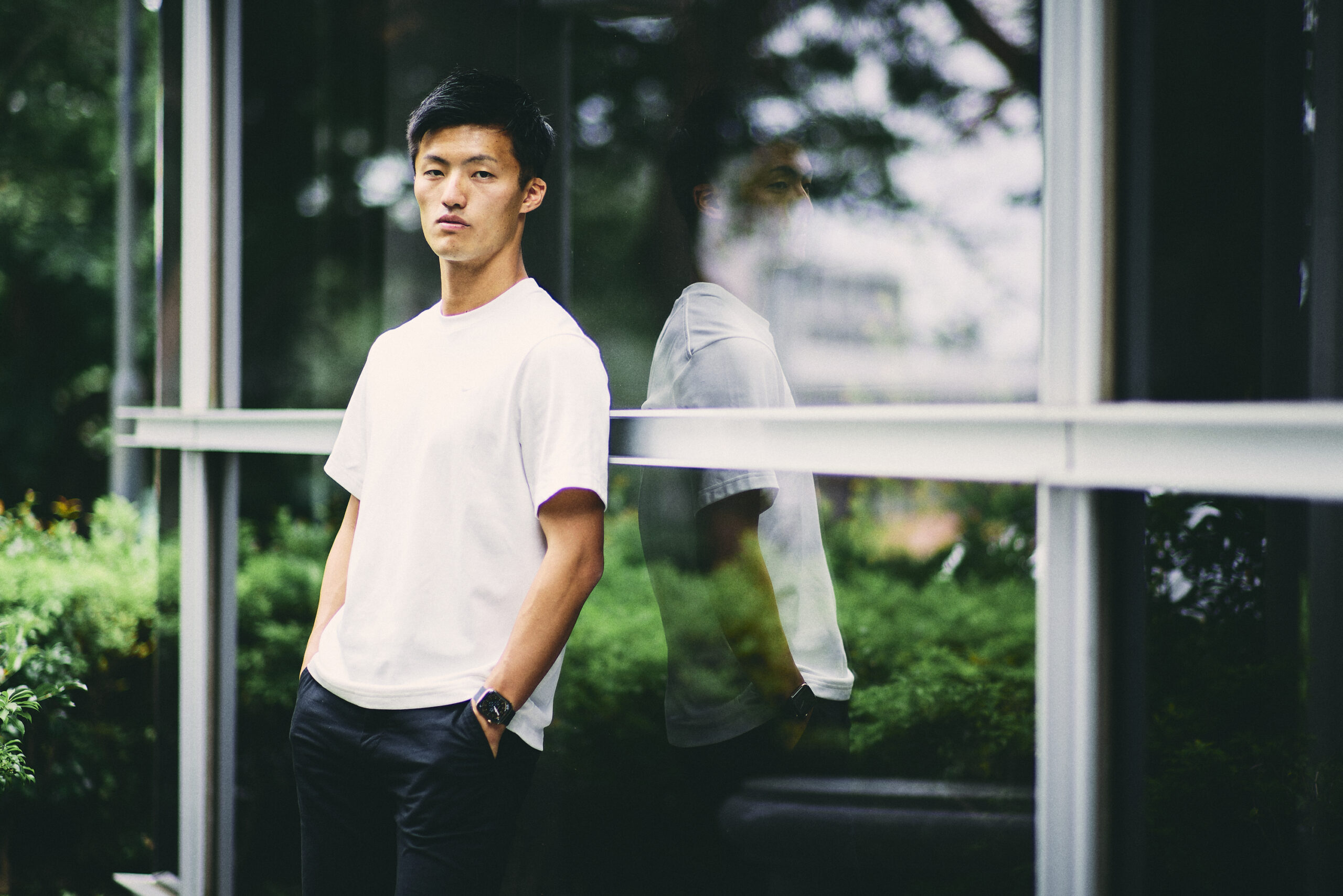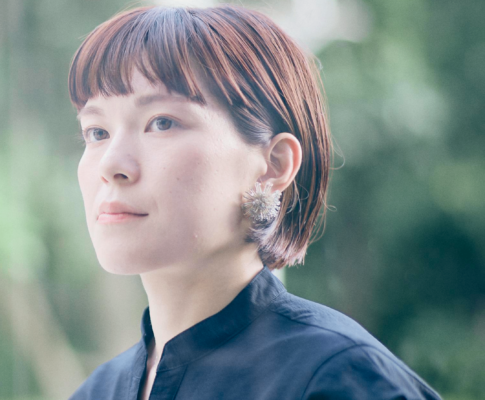目次
- Accumulation of consistent and meticulous training
- “Resolution” born from being away from parents
- That 0.005 seconds. Life-changing “1/1000th of a second”
- Mindlessly running through
- Go beyond keep winning
- The view that only the eldest son can see
- Not only track and field, but also my “writing skills” are my strong points
- A year as captain – and then to the World Athletics Championships
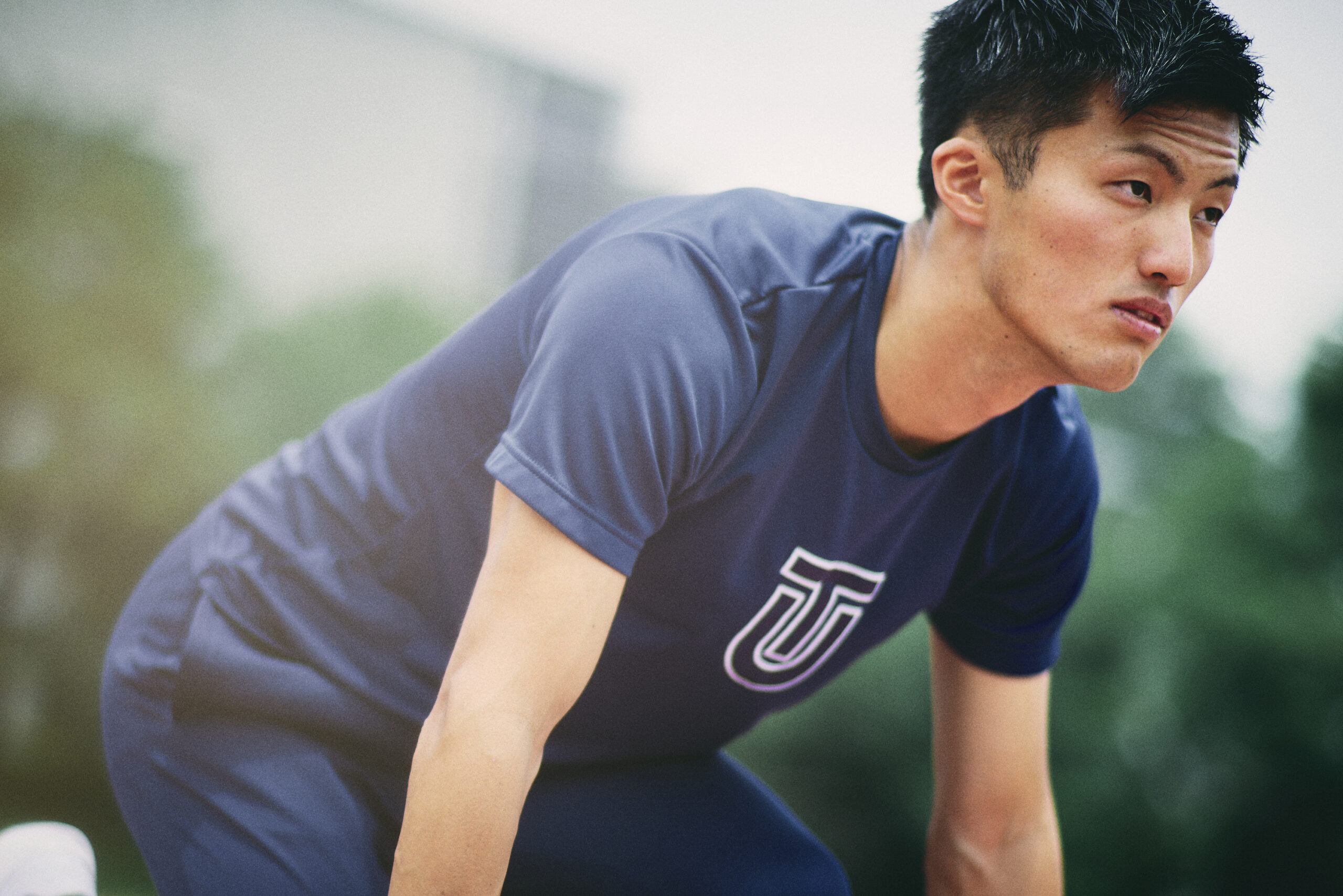
Hiroki Yanagita
Born in Gunma Prefecture in 2003. Men’s 100m 10.02 seconds (7th in Japanese history *as of June 2025)
Graduated from the Second High School of Tokyo University of Agriculture and is a fourth-year student at Toyo University’s Faculty of Literature.
Under the influence of his parents, he started track and field when he was in elementary school, and in the second year of junior high school, he placed third in the long jump at the Junior Olympics. In 2020, when he was in his second year in high school, he participated in the Seiko Golden Grand Prix track and field as a special high school student and set a record (10.27 seconds) in the 100m, which was the sixth best in high school history at the time. At the Japan Championships in the same year, he was the only high school student to reach the final and finished seventh.
After going to university, he set a new personal best of 10.02 seconds at the Asian Championships in 2023 and reached the semifinals of the World Athletics Championships in Budapest in the same year. At the 2024 Paris Olympics, he was the second qualifying runner in the 4×100m relay.
This season, at the Kanto Intercollegiate, he set a tailwind record of 9.95 seconds. At the Asian Championships in May, he became the first in Japanese history to win back-to-back titles in the same event and have been steadily winning back-to-back matches. Aiming for even greater heights, he will take on the challenge of the World Athletics Championships Tokyo 2025.
Accumulation of consistent and meticulous training
――You are currently a fourth-year student at Toyo University, what was your reason for choosing Toyo University?
When I thought of a university that was strong in sprinting, I had an image of Toyo University. Among the other universities I visited, I was very inspired when I participated in a training camp for the short-distance event in March of my second year of high school.
――I heard that you enrolled in the Faculty of Literature.
Yes, I’ve loved English since I was in junior high school, and for some reason, my grades in English were good. That’s why I wanted to enter a faculty where I could learn English. The reason why I decided to apply to the Faculty of Literature was that I could learn English and other cultures. In fact, when I went on an expedition or sightseeing in a country where I took a class (for example, British culture), there were a number of occasions where I found the place that came up in class! In such a case, I am glad that I chose the Faculty of Literature.
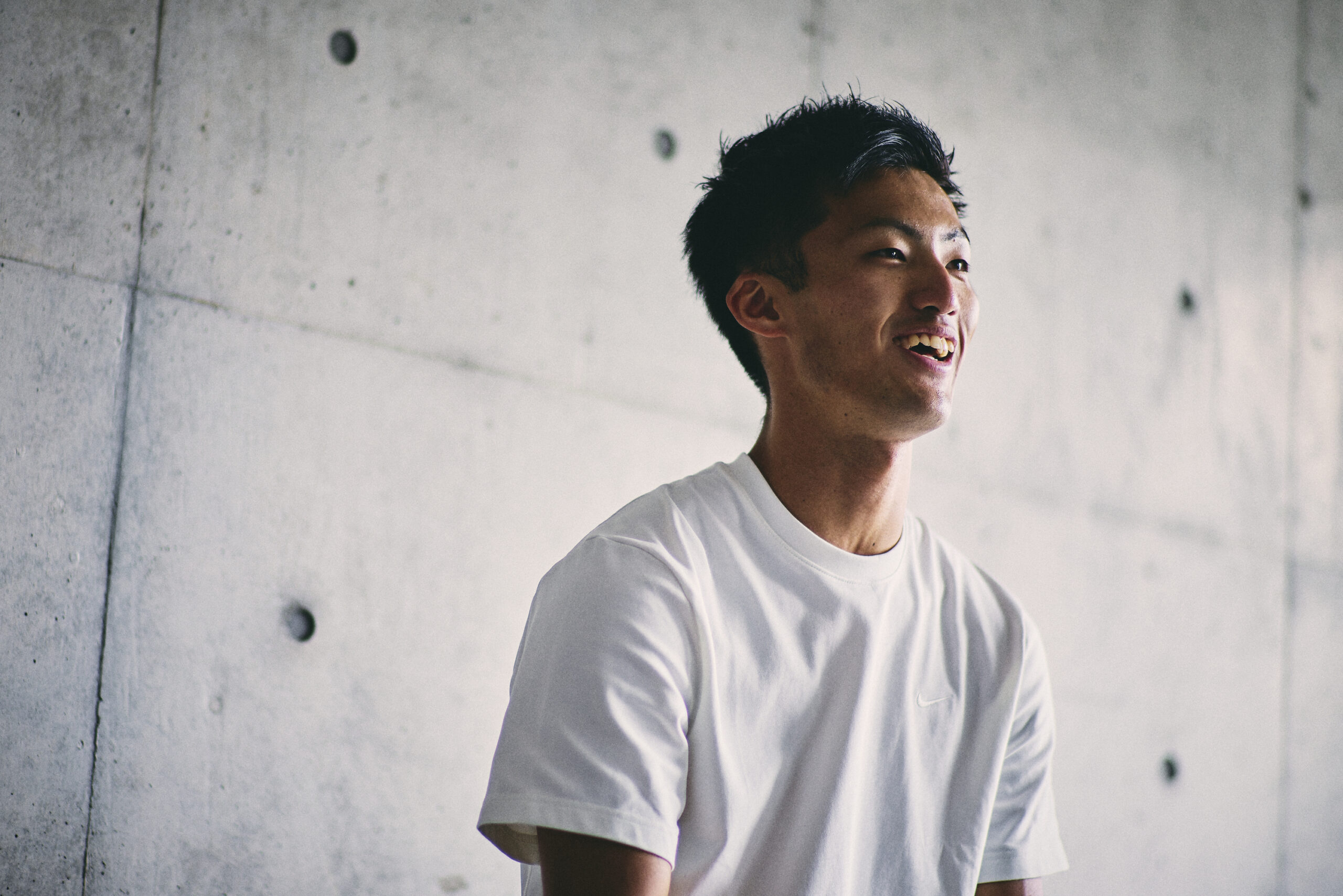
――I see. I would like to ask you about training at Toyo University. What kind of training do you usually do?
Training contents varies depending on the time of year and season, but it is not “a lot of running every day” like a long-distance runner. There are a small number of runs, and the distance is short. The training time is basically 2-3 hours in the morning.
For example, in warm weather like now, the main thing is to strengthen speed. I run several distances of 60m, 80m, and 120m, and I do weight training about twice a week.
When the match gets closer, I tend to focus on the weights. For example, training to see how quickly I can lift a bar with a heavy load. For short distances, you need to have the strength to move your heavy body from scratch and instantly bring it to top speed. The phase where you use the most power is at the “start”.
It’s a training menu that works on the explosive power that is necessary for that, but there are days when I lift the bar once or twice before the match. When it comes to back-to-back matches, I can’t practice, so my top priority is to beat tiredness for the next match. Now (mid-June) is the time when the back-to-back matches have settled down and my fatigue has come off, so I have switched to training with a higher load again for the Japan Championships. In this way, I plan my training menu while adding sharpness according to the flow of the season.
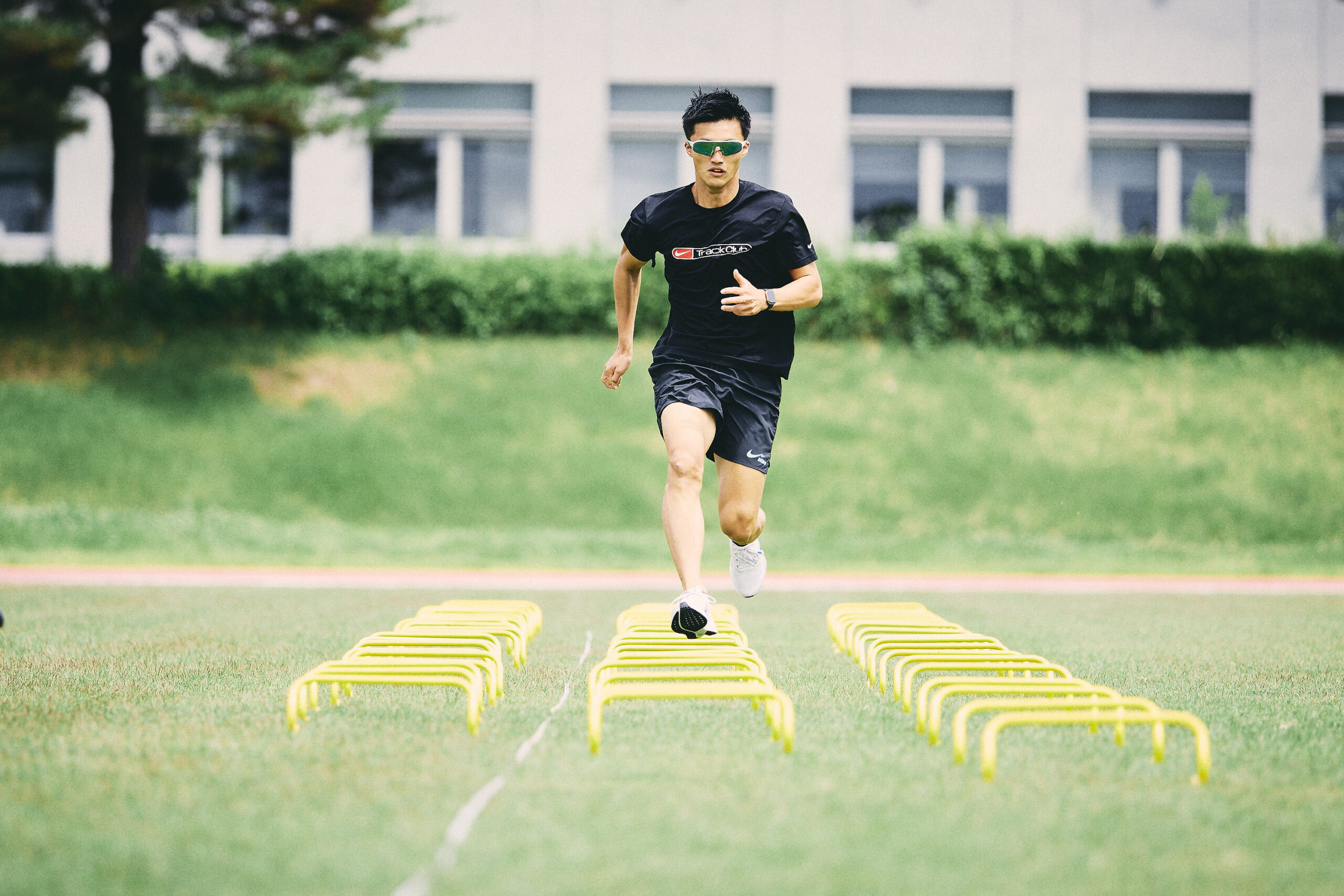
――I had a chance to watch a little bit of your training earlier, but after you finished practicing on the track, you moved to the indoor track and trained with a belt-like device on your waist, right?
That was speed training using a machine called “1080SPRINT (Ten Eighty Sprint)”. Dodgers’ Shohei Ohtani uses the same thing. The belt wrapped around the waist and the main body are connected by wires, and the machine continues to apply the load of the set weight. You can practice sprinting while putting a load on it.
I measure how fast I am in relation to that load, down to the smallest numerical value. I continue this training regardless of the season, and I put a lot of emphasis on making time in between matches. When I entered university, my coach, Hiroyasu Tsuchie, suggested this menu, and I’ve been working on it ever since. It is also an advantage to be able to review back records from a long time ago and objectively see my growth and change.
――So you’re checking your current state by comparing it with past data.
That’s right. My personal best was set about two years ago, but I can get a guideline such as “I think I can achieve this record time now” by comparing the record at that time with the record at the same time this year. On the other hand, if the record time is bad, I can see that I am not doing well, so it will be an opportunity to review my training contents. I am very grateful to be able to grasp my condition in detail based on numerical values, rather than relying only on my senses.
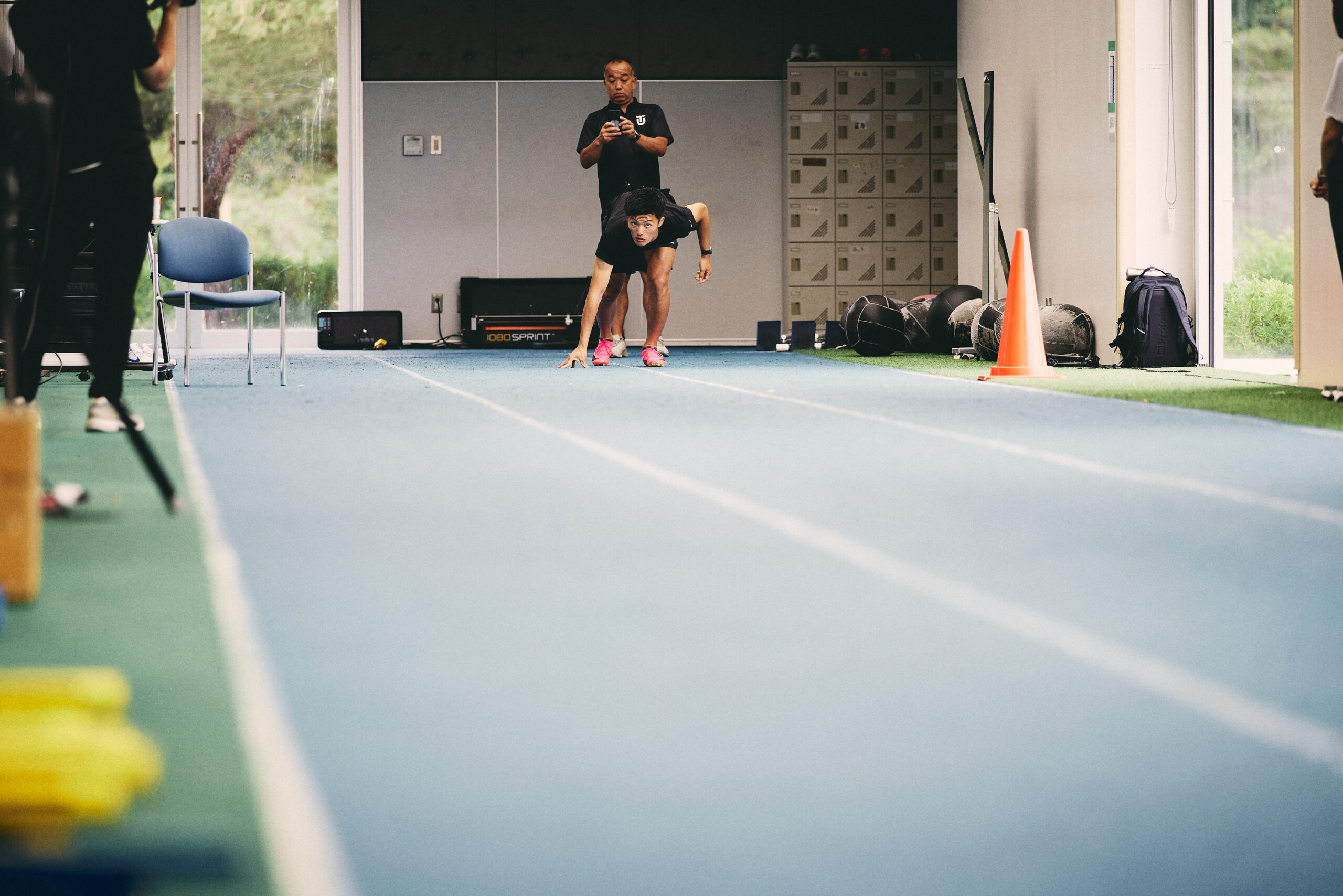
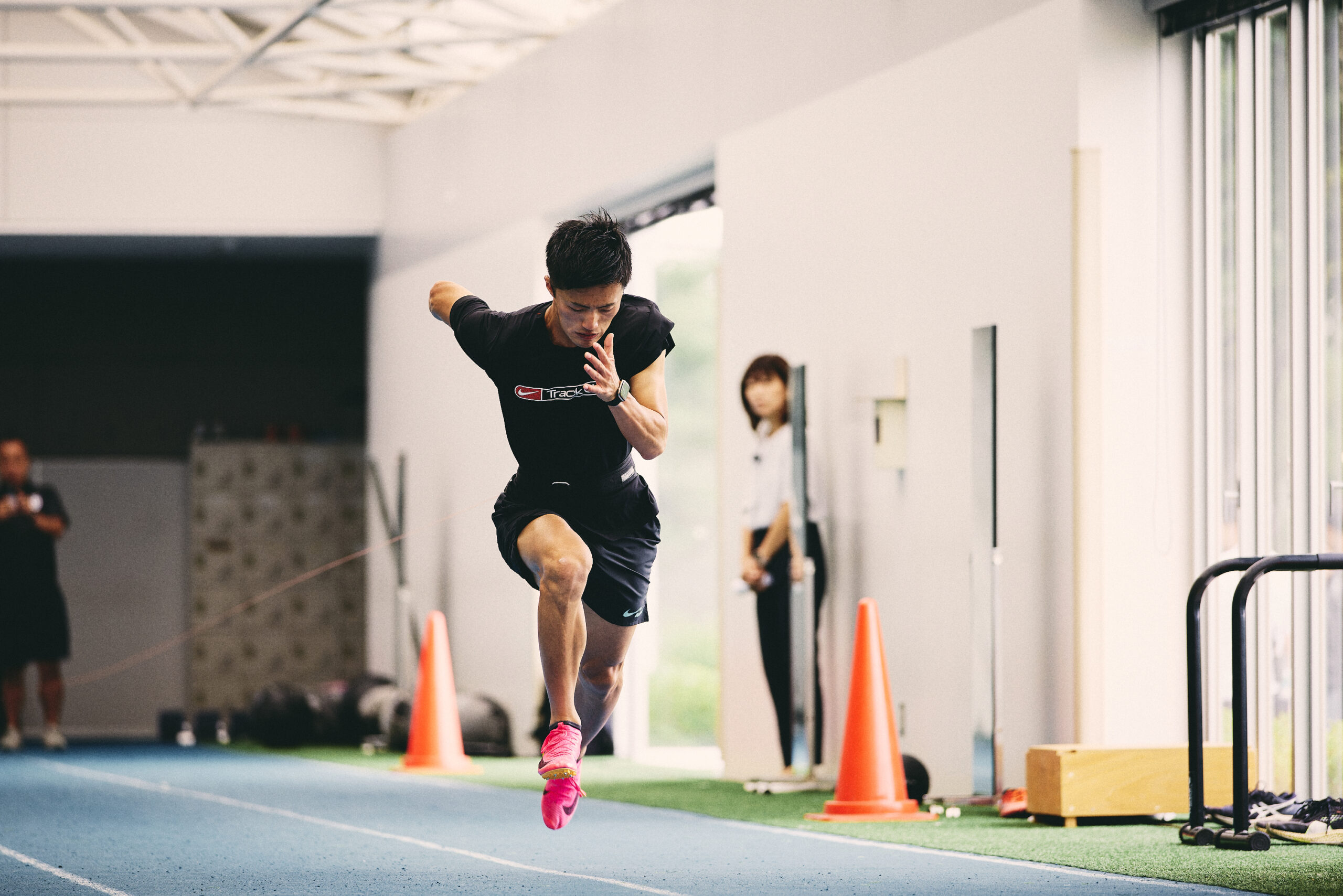
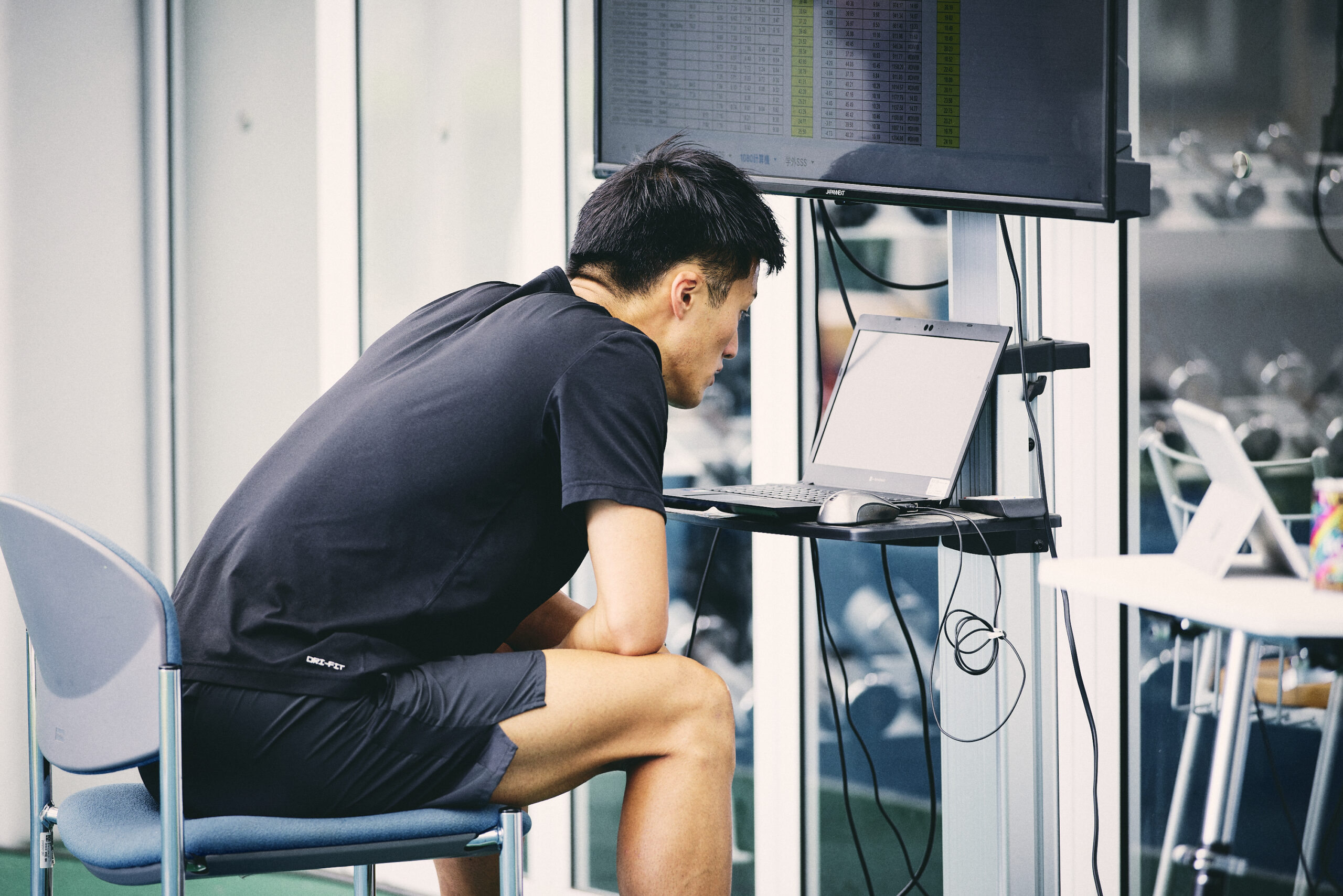
Precise measurement of numerical values while applying load
――Do you enjoy training every day?
I’m not good at mornings, so it’s fun except for being sleepy (laughs). Training starts at 9 a.m., but when I go to the track, there’s always someone there. If I practice alone, I tend to compromise somewhere, but at Toyo University, there are many friends who can compete and enhance each other. It’s nice to be able to naturally do high quality training.
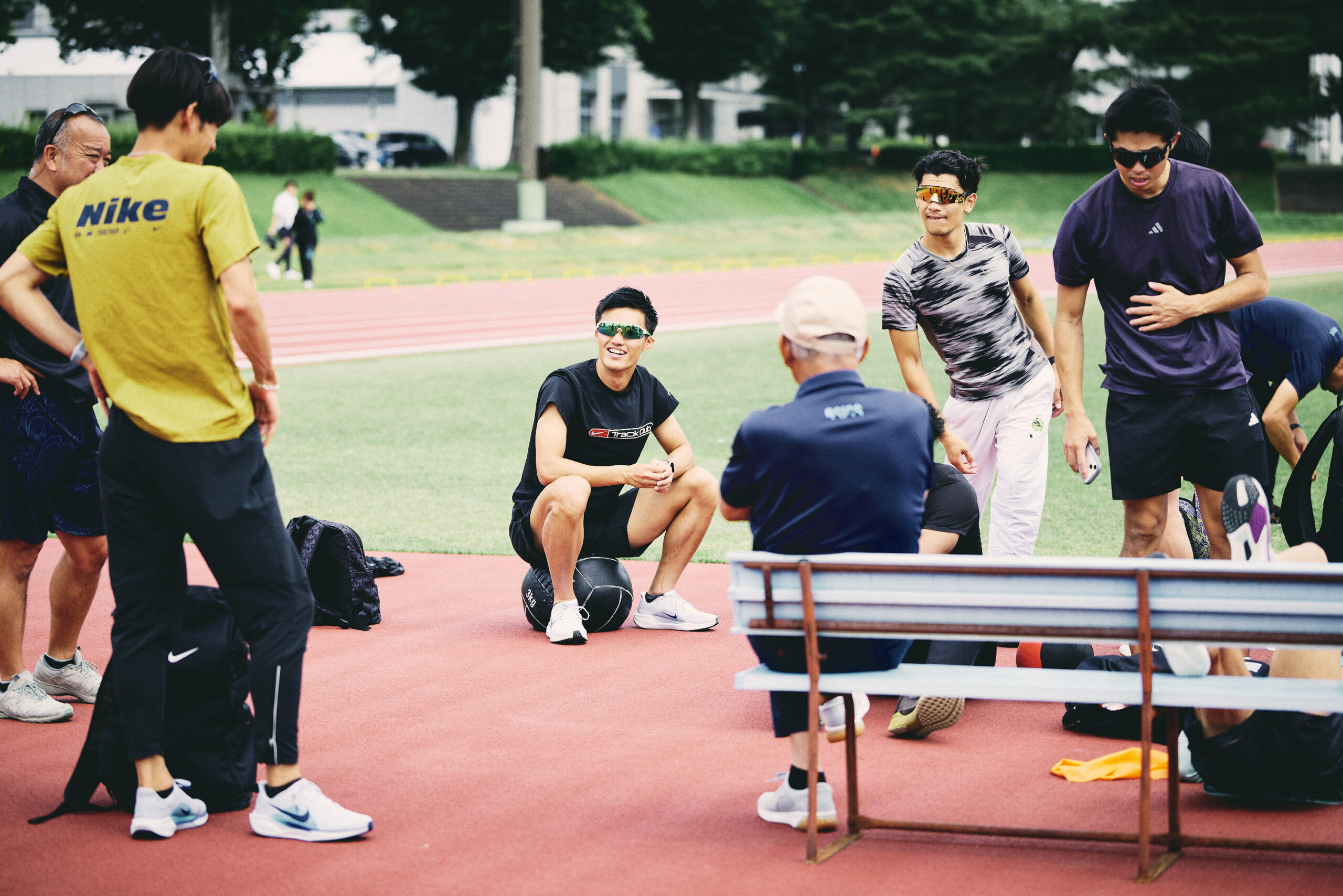
“Resolution” born from being away from parents
――What made you start track and field in the first place?
My parents did track and field, so I naturally got into the habit of running from a young age. Since I was in the second year of elementary school, I have participated in local parent-child marathons with my parents. In junior high school, I joined the track and field team and did the 100m and long jump, but I liked the 100m better.
――You have now grown to a level where you can compete on the world stage, but when did you start thinking about “aiming high in track and field”?
If I had to say it, it would be when I enrolled in high school. I went to Second High School of Tokyo University of Agriculture in Takasaki, Gunma Prefecture, but it was not too far from my home in Tatebayashi to commute. But if the practice goes on for a long time, it ends at 7 or 8 o’clock at night, so when I get home, it will be 10 or 11 o’clock. I didn’t have time to study before the test, so I decided to go into the dormitory and devote myself to club activities.…But actually, I went home once in three days after moving into the dormitory (laughs).
――Really!How come?
I hated the dormitory and got homesick (bitter laugh).
I’m sure there are a lot of people who leave their parents in high school, but for me, that was the biggest turning point. I didn’t think I wanted to “compete on the world stage” yet, but that’s when my resolution grew that I wanted to aim for a higher stage.
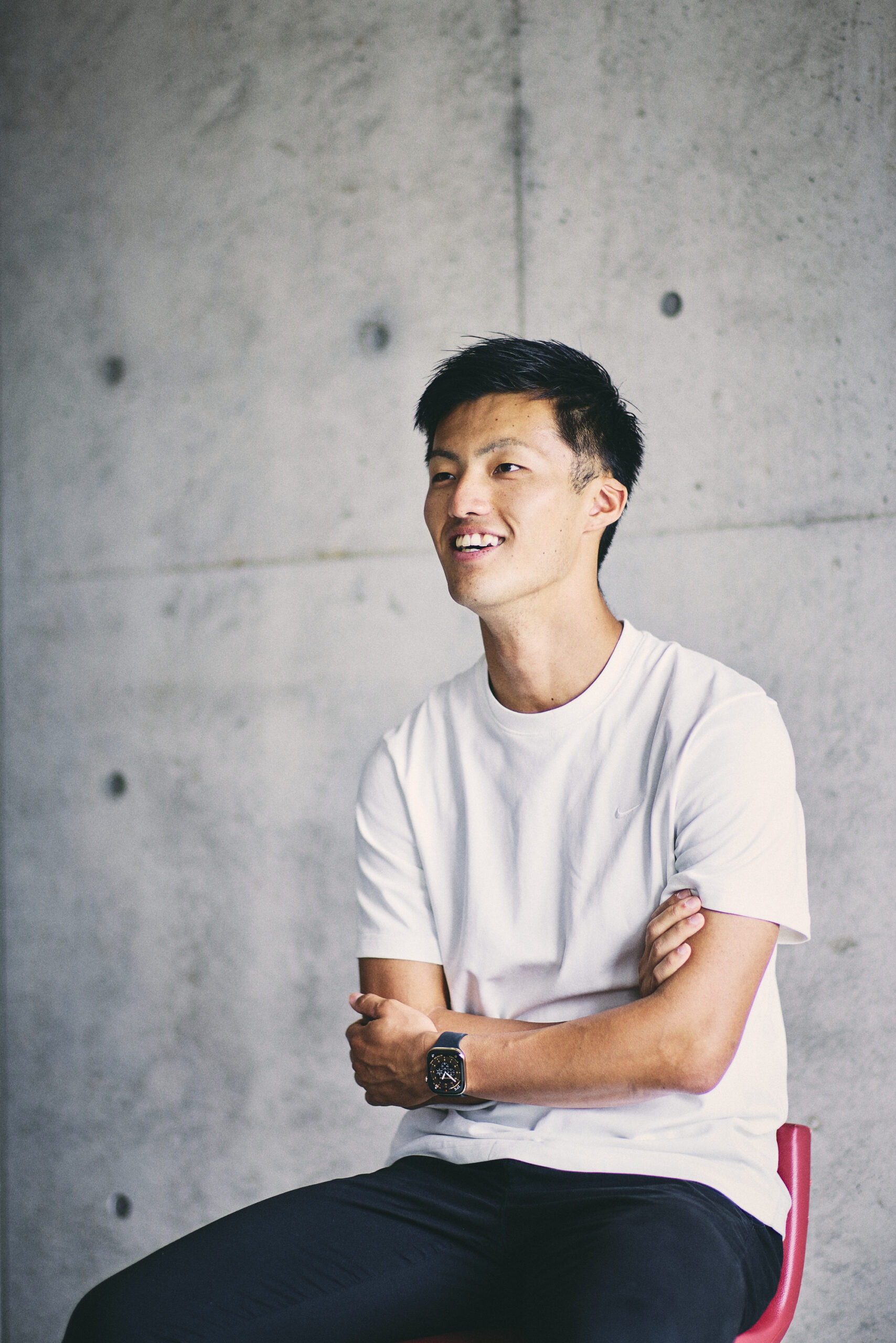
――What kind of goals did you set at the time?
Well, I’m the type of person who sets realistic goals, and I don’t set outlandish goals that I think are impossible. When I entered high school, I won a prize in the long jump at the summer inter-high school championships, and I was able to win the Japan Games in the fall. I was able to improve my record steadily, so when I moved up to my second year, I set a goal to “win the Inter-High School Championships this year”.
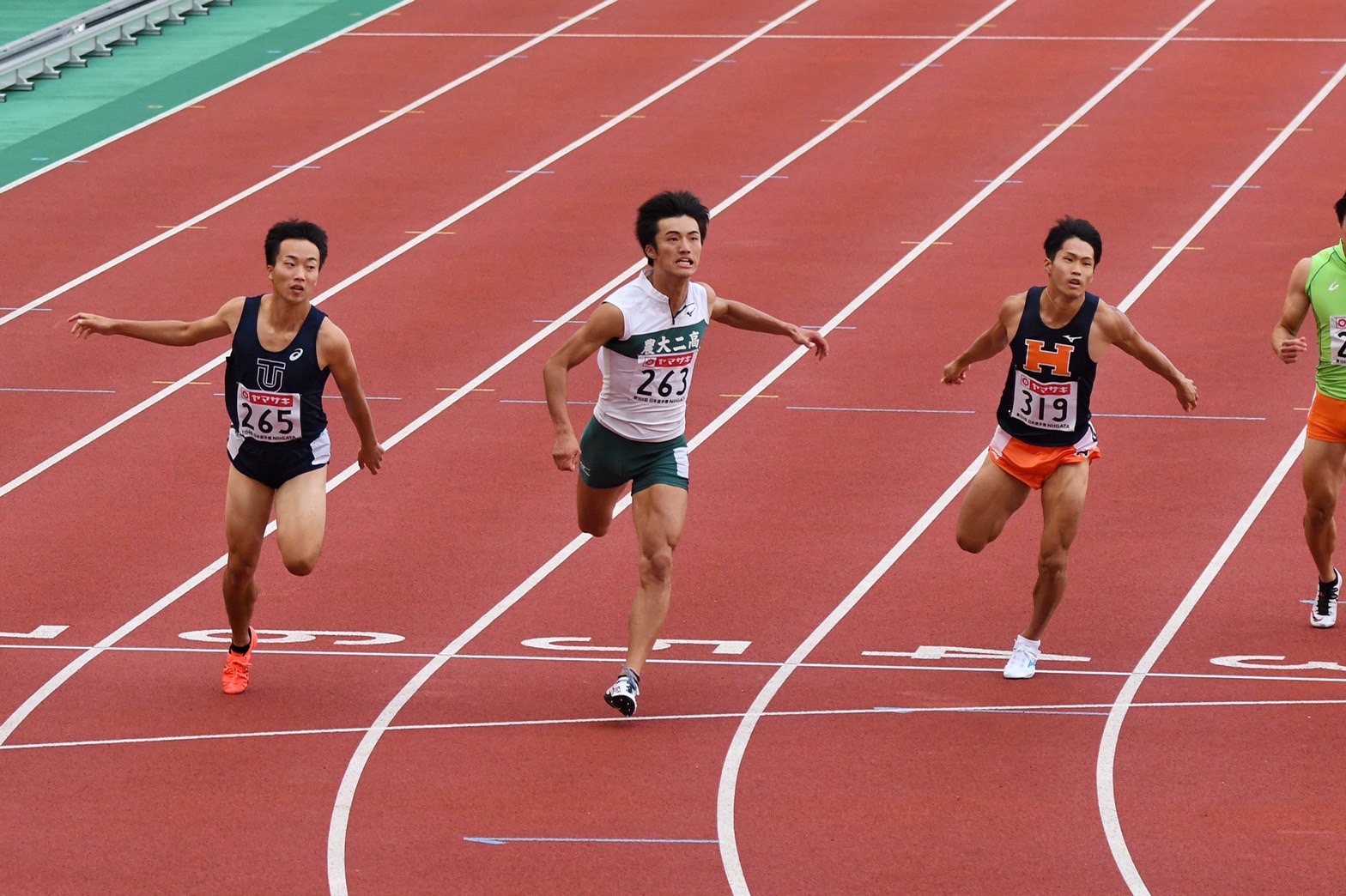
――So you’ve steadily stepped up while accumulating records and results.
Yes. Then, in the fall of my second year of high school, I was able to make it to the final of the Japan Championships in the 100m. I started to take on the world when I thought, “Well, if I can achieve the same results in the qualification race for the World Championships and the Olympics next time…”. As a result of gradually improving my goals like climbing stairs, it led to my current situation.
――Now you are focusing only on the 100m, how long have you been doing the long jump?
That was until the summer of my second year of high school. My father, who was a jumper, encouraged me to do the long jump saying “if you have fast feet, you can do the long jump” so I started doing it. Then, when I was in the second year of junior high school, I won the prefectural qualifying round for the Junior Olympics. I thought, “I’m going to practice more properly before I participate” That’s why my first national championship wasn’t in the 100m, but in the long jump (laughs).
After winning a prize at the Junior Olympics, I seriously began to work on it, and after that, I won the long jump and finished second in the 100m in my third year of junior high school. However, it wasn’t until my second year of high school that my 100m record improved a lot, and I decided to focus on the 100m after that.
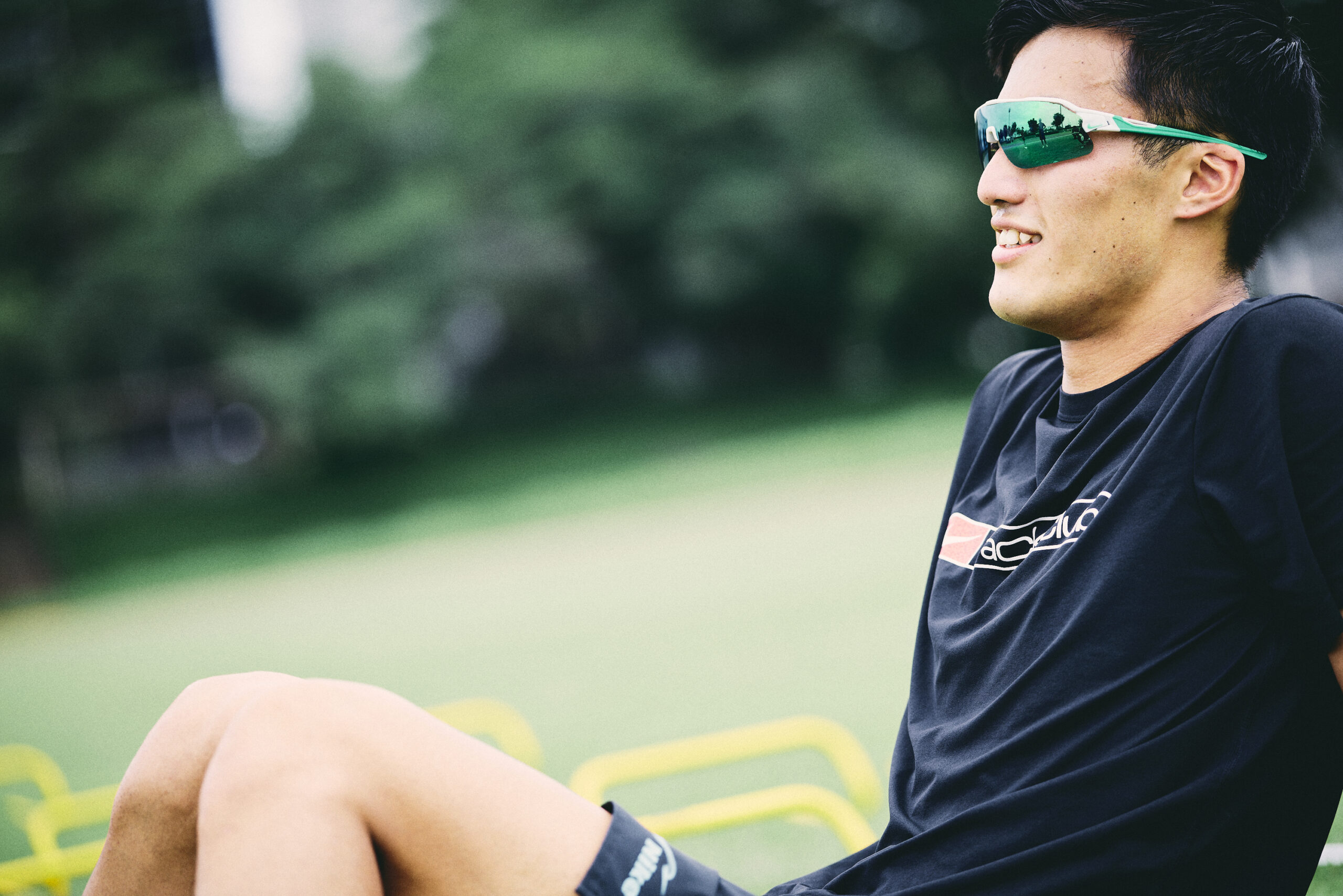
That 0.005 seconds. Life-changing “1/1000th of a second”
――What do you think is the appeal of the 100m?
If you finish in first place, it is easy for everyone to see and stand out. Ultimately, because it’s simple.
But on the other hand, there are many elements condensed into a moment of less than 10 seconds. From the outside, it may seem simple “just running,” but it contains the process that I have accumulated so far, and it clearly shows in my “time” as a result. I think it’s attractive, including the fact that you can see it with your own eyes. This applies to track and field in general, but I feel that the 100m is more densely packed.
――There are moments when the time is greatly reduced in the long distance, but in the 100m, the change is negligible. While there are many things that will not shrink easily, where does the driving force that keeps you moving toward your goals every day comes from?
At last year’s Japan Championships, I missed out on representing Japan at the Paris 2024 Olympics by a margin of “five thousandths of a second.” The top two finishers made it to the national team, and I finished in the same time as the second-place finisher. The display time is the same at 10.14 seconds. As a result of the measurement, I was five thousandths of a second slower, so I missed out on the national team.
It’s a really a slight difference that you don’t pay attention to in everyday life. In the world of the 100m, even one thousandth of a second, let alone one hundredth of a second, can make a difference between winning and losing. I talk about it like this now, but at that time, I was full of unworthiness and frustration. What I experienced was the “losing” part, but track and field doesn’t only have the “winning” part. That’s why I can think, “Next time I will win,” and that’s what motivates me.
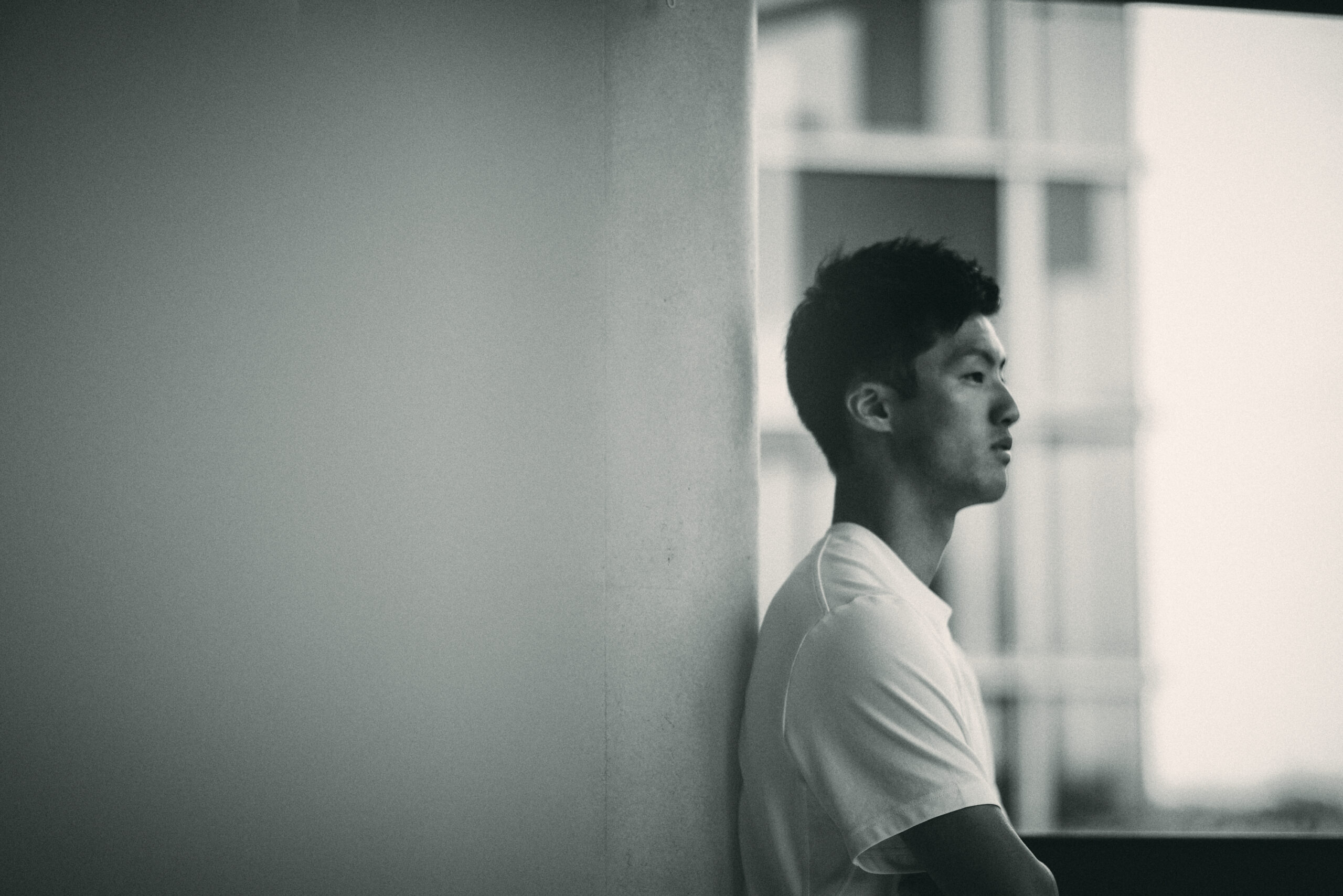
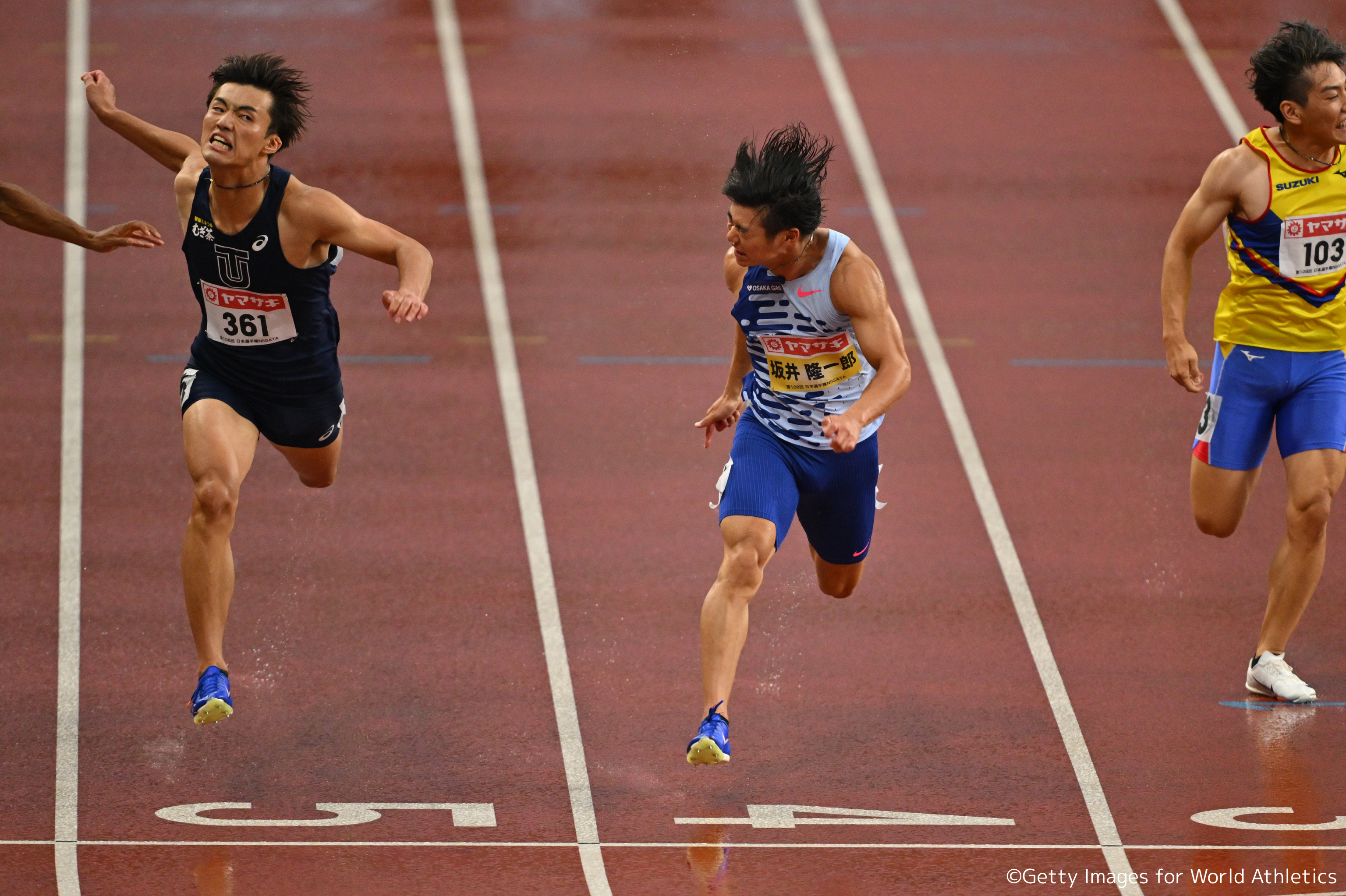
――So that kind of experience leads to the quality of your daily training.
That’s right. But to be honest, I don’t know if the training I’m doing now is really going to make me faster. The season starts in April, and I will be able to get the answers for the first time at the race.
Until then, I have no choice but to believe in myself and build up. There is no “right” way to run fast, and if there are 100 people, there should be 100 ways to practice. That’s another interesting point, and I think it’s a factor that keeps me working hard every day.
――For example, have you ever wanted to quit when what you have been practicing does not lead to good results?
No, I haven’t. Not once. Come to think of it, I think that will be when it’s time for me to retire.
Of course, there are times when I can get depressed. I’m a person who has a lot of emotional waves, but when I wake up after eating and sleeping, I forget more than half of it (laughs). Traditionally, it is unlikely that it will drag on for more than three days.
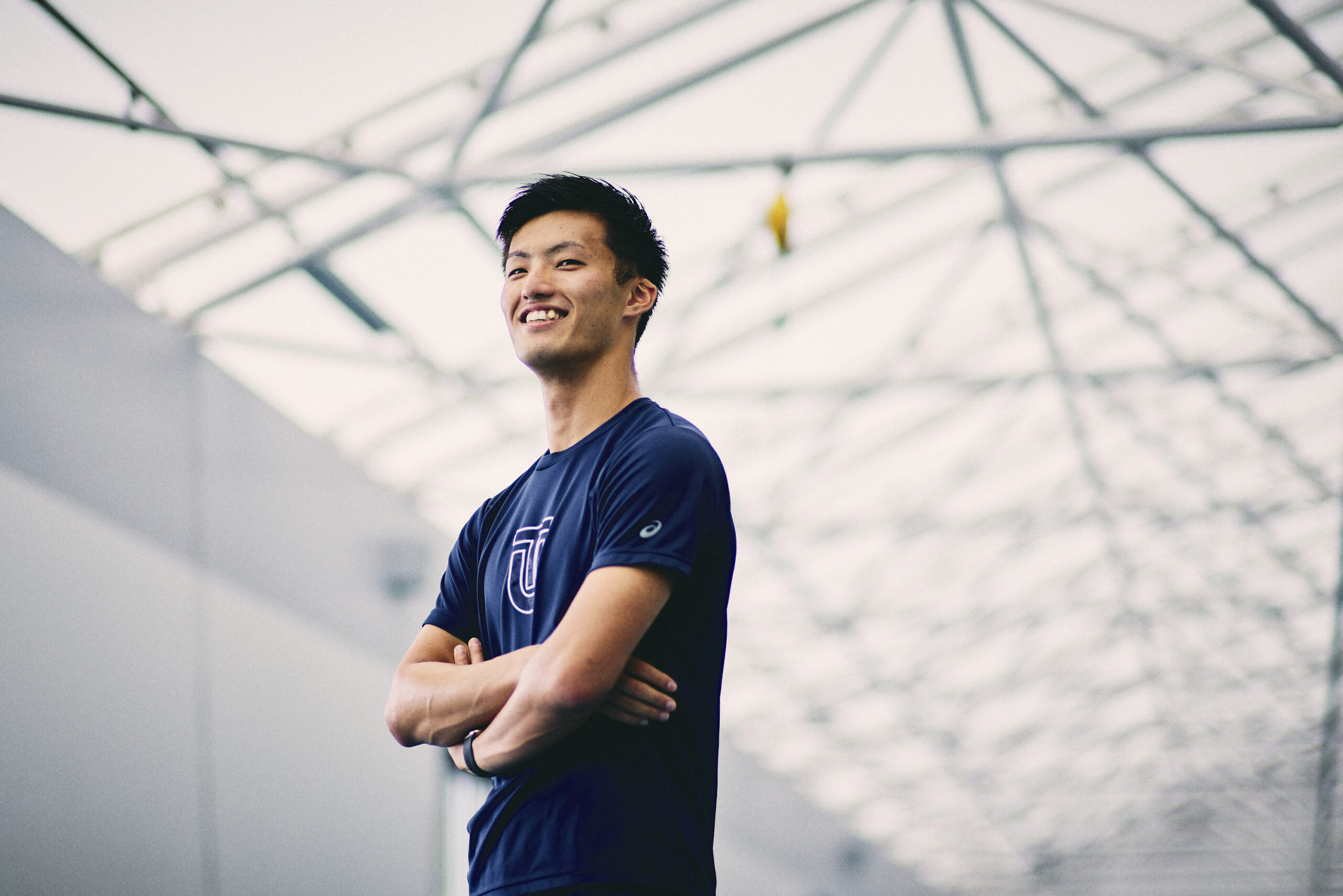
Mindlessly running through
――Sorry for asking a simple question. You’ve participated in several world championships so far, but how do you feel about the timing of the introduction of athletes before the start? There are many athletes posing for the camera, but do you get nervous?
If I become bearish at that time, I will lose. If I think for a moment that “I may not win”, I will never win. Of course, I can’t perform my best in every race, so to be honest, there are times when I’m not fully in shape. But when I get on the lane, how bullish can I be, that’s all.
Even when I’m not feeling well, I don’t think about anything negative. I have no choice but to do it. But on the other hand, when I’m feeling good, I can feel it. I can feel that “Oh, maybe I can achieve a record today.”
――100m goes by in a blink of an eye, but do you have a lot of thoughts while running?
There are times when it comes to mind, but when it does, I usually don’t achieve results. Ideally, I don’t think about anything, I just feel like I’ve reached the finish line before I know it. Otherwise, I don’t think I won’t be able to achieve result. But that’s different for everyone, and I think some people think a lot of things in their heads, but at least I can race better when I don’t think about anything. In short, when you are not thinking about anything, you are in a state where you are able to make your ideal movement without being conscious of it. On the other hand, when I must be conscious of it in my head, I am in a state where I am forcing myself to move in search of good movements. So, in my case, being “mindless” is the best.
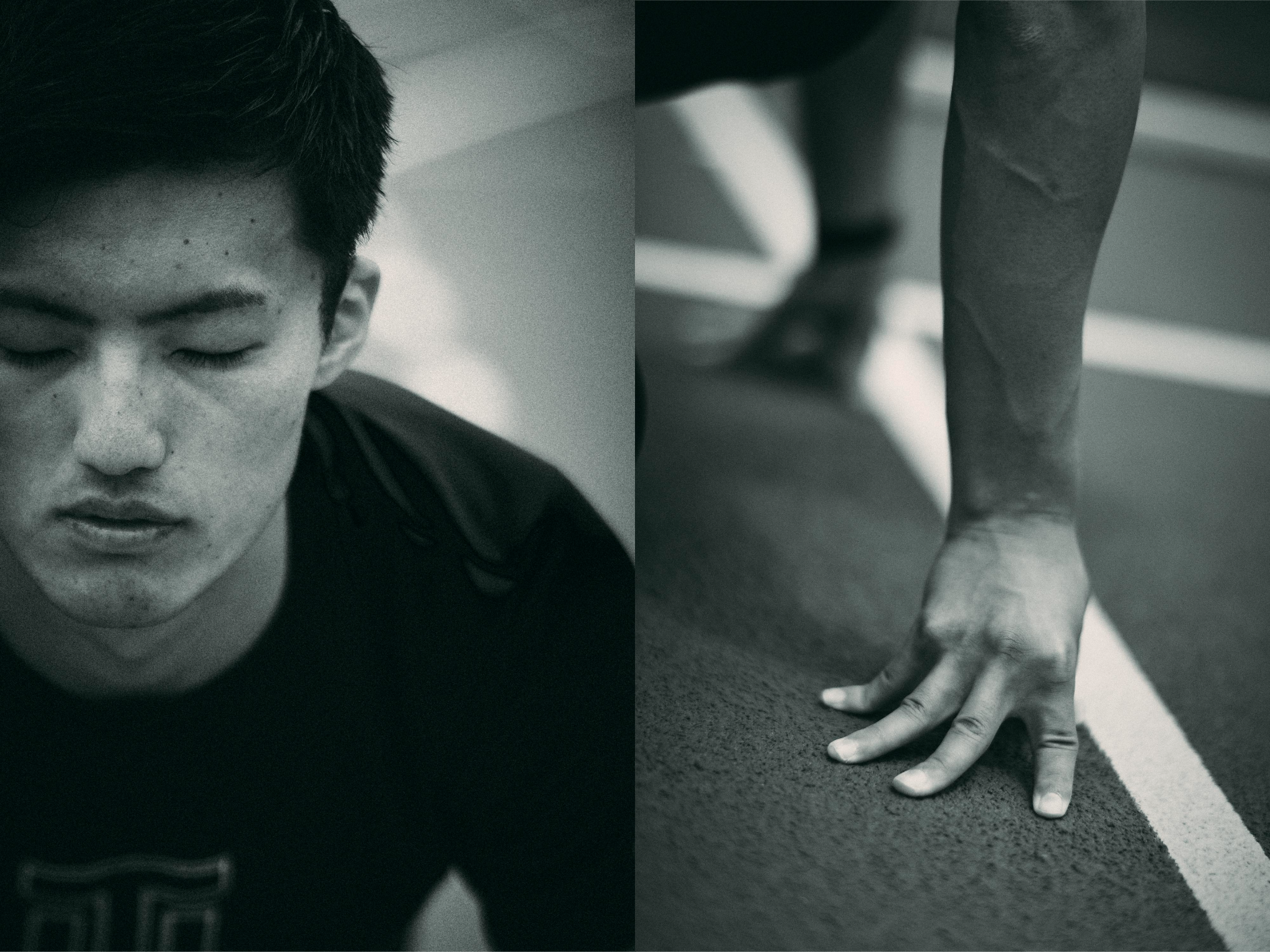
――At the Kanto Intercollegiate in May, you ran 9.95 seconds, albeit with a tailwind, but what kind of condition were you in at that time?
At that time, I started with the intention of hitting the 9-second range. In fact, it had a decent impact, but I was originally aiming for the 9-second range with no wind, so I really had to do more with that kind of tailwind (+4.5m/s). I have a good feeling about the first half of the race, but overall, if I had to say whether it was a good race or not, I would say, “Hmmm…I don’t think so”
――What is your best race?
It will be the 2023 Asian Championships. I set a personal best of 10.02 seconds, but I was able to run mindlessly, and before I knew it, I was at the finish line. My coach, Hiroyasu Tsuchie still tells me, “That start was really good,” but for me, I’m like, “How did I do it…” (laughs) I wasn’t really conscious of that.
At that time, I was focusing on speed training using the 1080SPRINT. Because of that feeling, I still incorporate it every day for the Japan Championships.
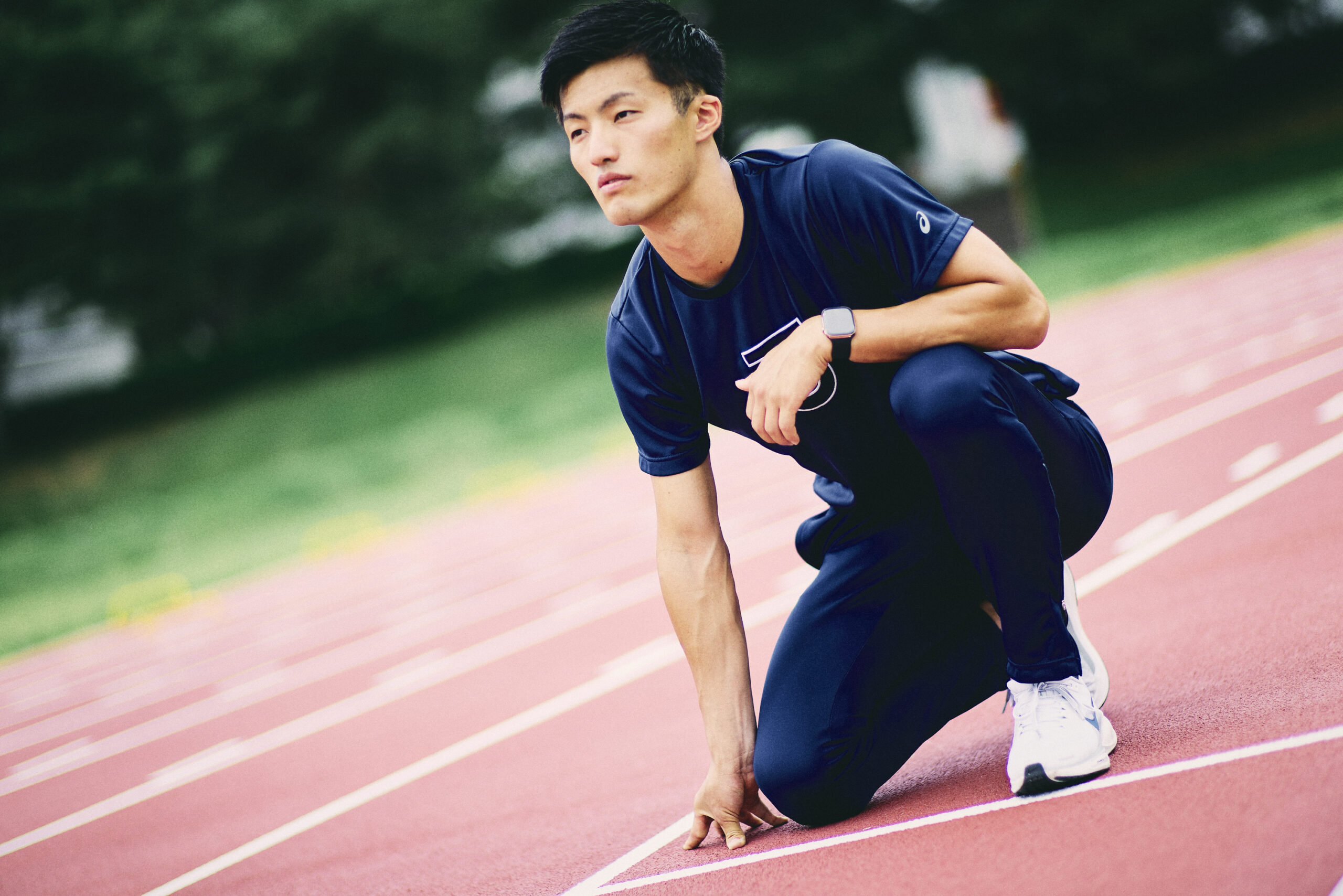
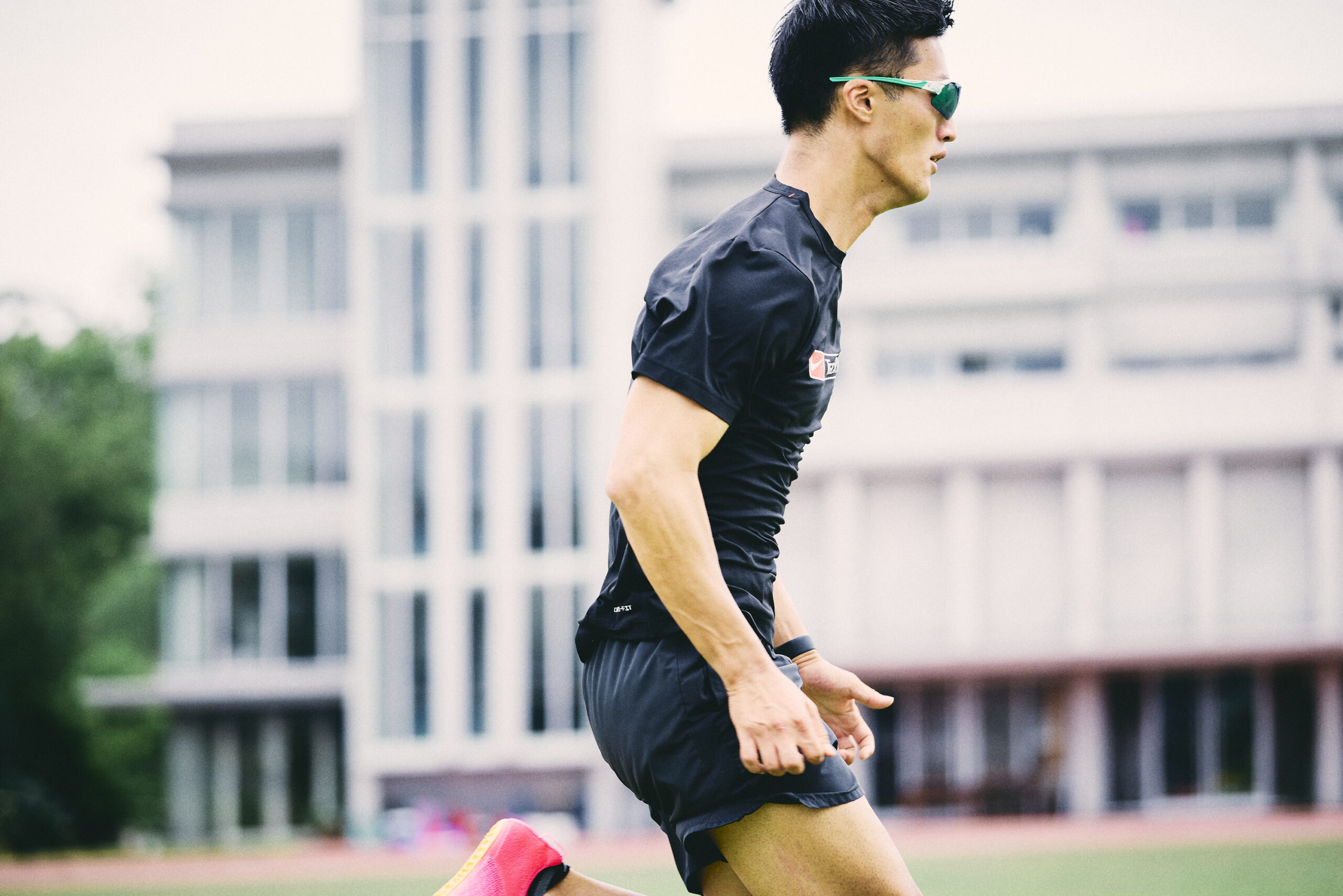
Running “mindlessly”
Go beyond keep winning
――What are your strengths in running?
The most strong point these days is the “start”.
But I wasn’t good at the start to begin with. Or rather, I was bad at it because I had ups and downs. When I’m feeling good, I can get out at the right time, but I’m usually late…. The kind of race that dragged on continued until I entered university. As a result of training to overcome this weakness, before I knew it, my start had turned into my strength.
――What kind of training did you do ?
I worked on a lot of things, but the main one I did was the “1080SPRINT”, and the rest was the “mark training”. Recreate the starting stride of the world’s top athletes and run as if chasing their marks. As I continued to do this kind of training steadily, by the summer of my second year at university, I was able to get off to a good start.
――This season, you have won all of the Kanto Intercollegiate, Seiko Golden Grand Prix, and Asian Championships. How do you feel ahead of the Japan Championship?
There are many things that I think about, but I think it’s important to keep winning every race. I won the Asian Championship two times in a row, but for some reason I couldn’t win the Japan Championship. It is a difficult challenge. (bitter smile).But I’ve been able to win back-to-back races so far this season, so I’m going to try to race as usual. Each race I participate in has a different aspect to focus on, but I feel that I am able to digest smoothly what I need to do because I am able to overcome each challenge one by one and win more and more.
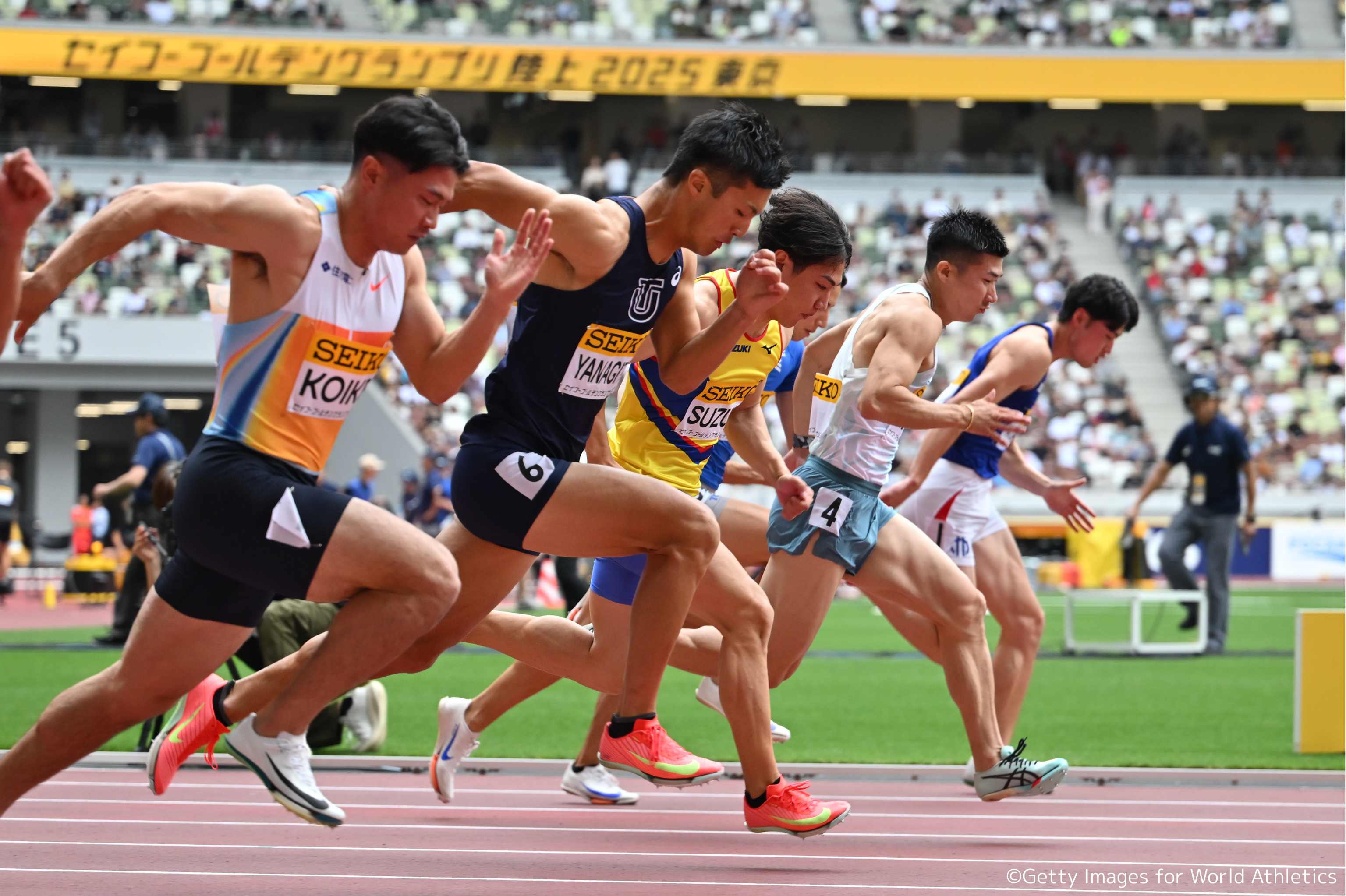
He also won the Seiko Golden Grand Prix
――Speaking of challenges, do you have an ideal image of the race in your mind?
Recently, I have been thinking about “finishing the match within 60 meters of the start.” I wasn’t good at the last 40 meters, or rather, it was still an untouched part. My strong point is the start, so if I can jump out well at the start, I should be able to take the lead up to 60 meters. How far back can you get them behind? The idea is not how to make up for the second half that I am not good at but bring an end at the start.
However, I am strengthening the second half of the 40m for the Japan Championships. For the remaining month or so, I would like to focus on that. After all, I think that depending on how well I prepare perfectly will change my feelings.
――What are your goals if you are able to participate in the World Athletics Championships?
It is the semi-finals of the 100m. Of course, I want to make it to the finals, but first I need to put on a performance that will allow me to set a new best performance in the semi-finals. I think that is the first step to competing on the world stage. That’s why I want to go to the semi-finals with the intention of giving everything I have.
――How about the relay?
If I can compete, of course I want to win a medal. I don’t know if I’ll be able to compete yet, but if I do, I’d like to be ready to finish in first place, no matter where I run.
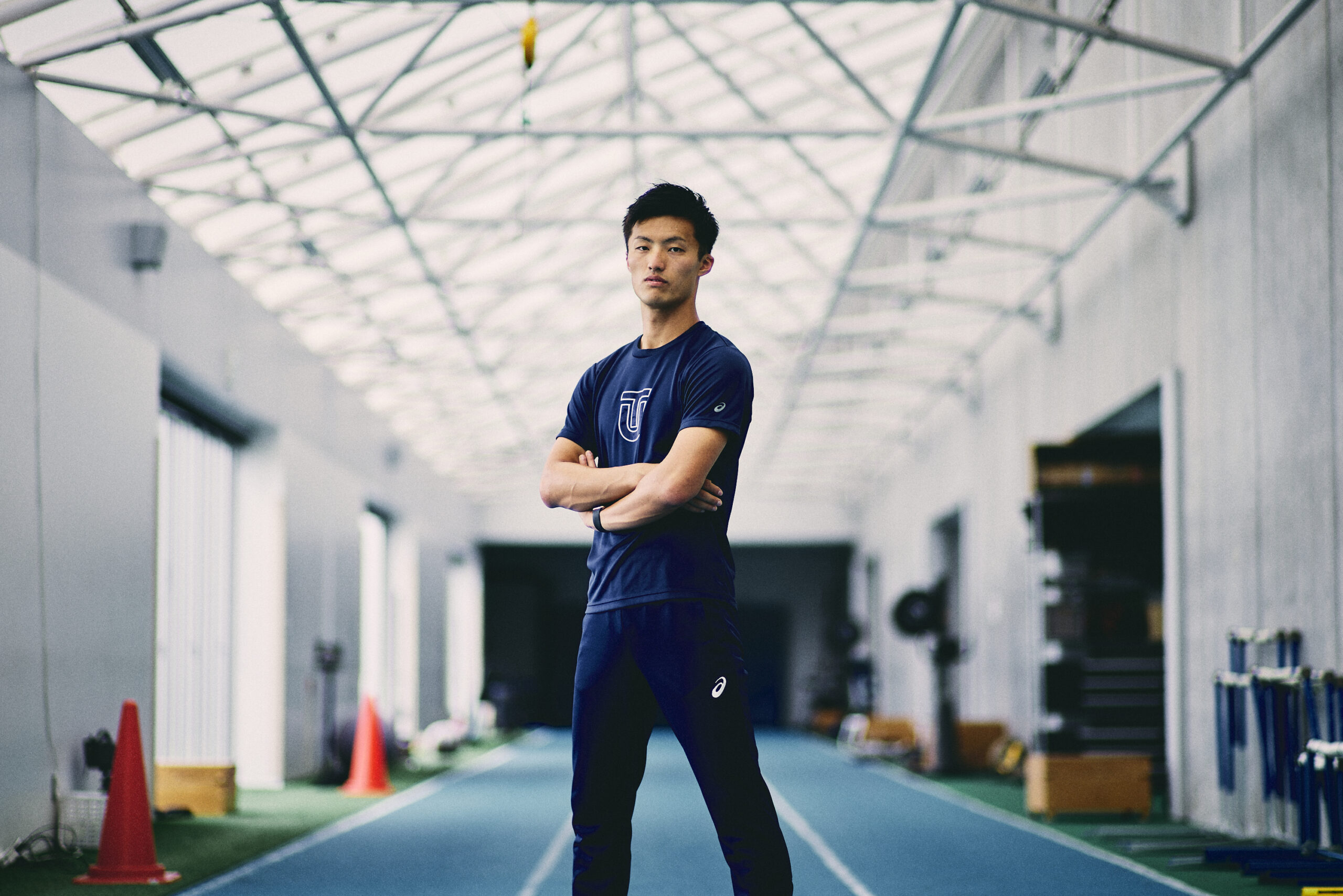
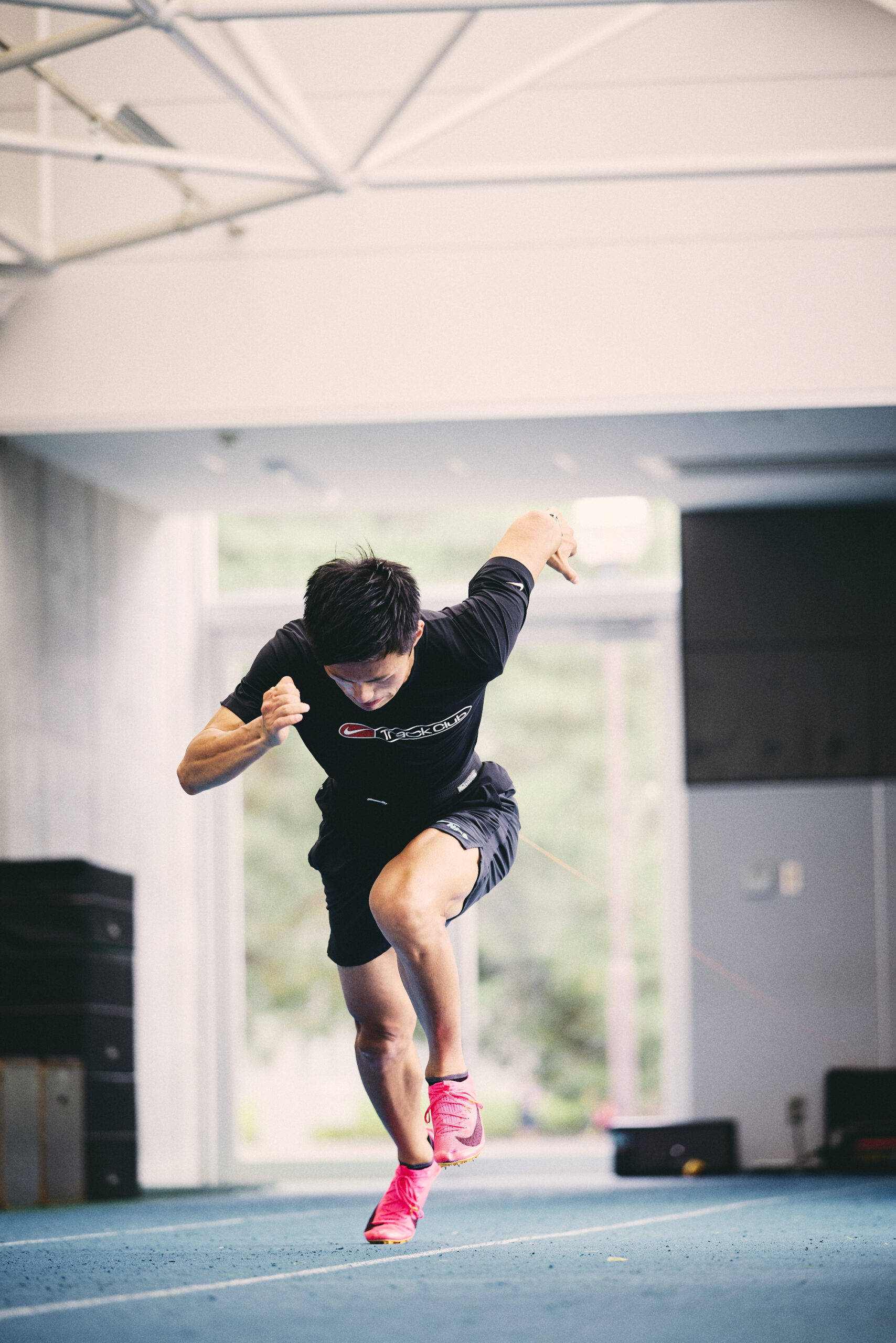
The view that only the eldest son can see
――I would like to ask you a few personal questions. What were you like as a child?
I was a naughty kid (laughs). Because I was quick to fight, my parents and teachers often got angry with me.
――Did you have any dreams at that time?
I wanted to be a pilot. I was completely influenced by the TV drama “GOOD LUCK!!” (laughs).
I saw it being rebroadcast at noon and thought, “That’s cool!” I still love flying and I get excited. But my friends around me said, “I don’t want to get on the plane that you fly” (laughs).
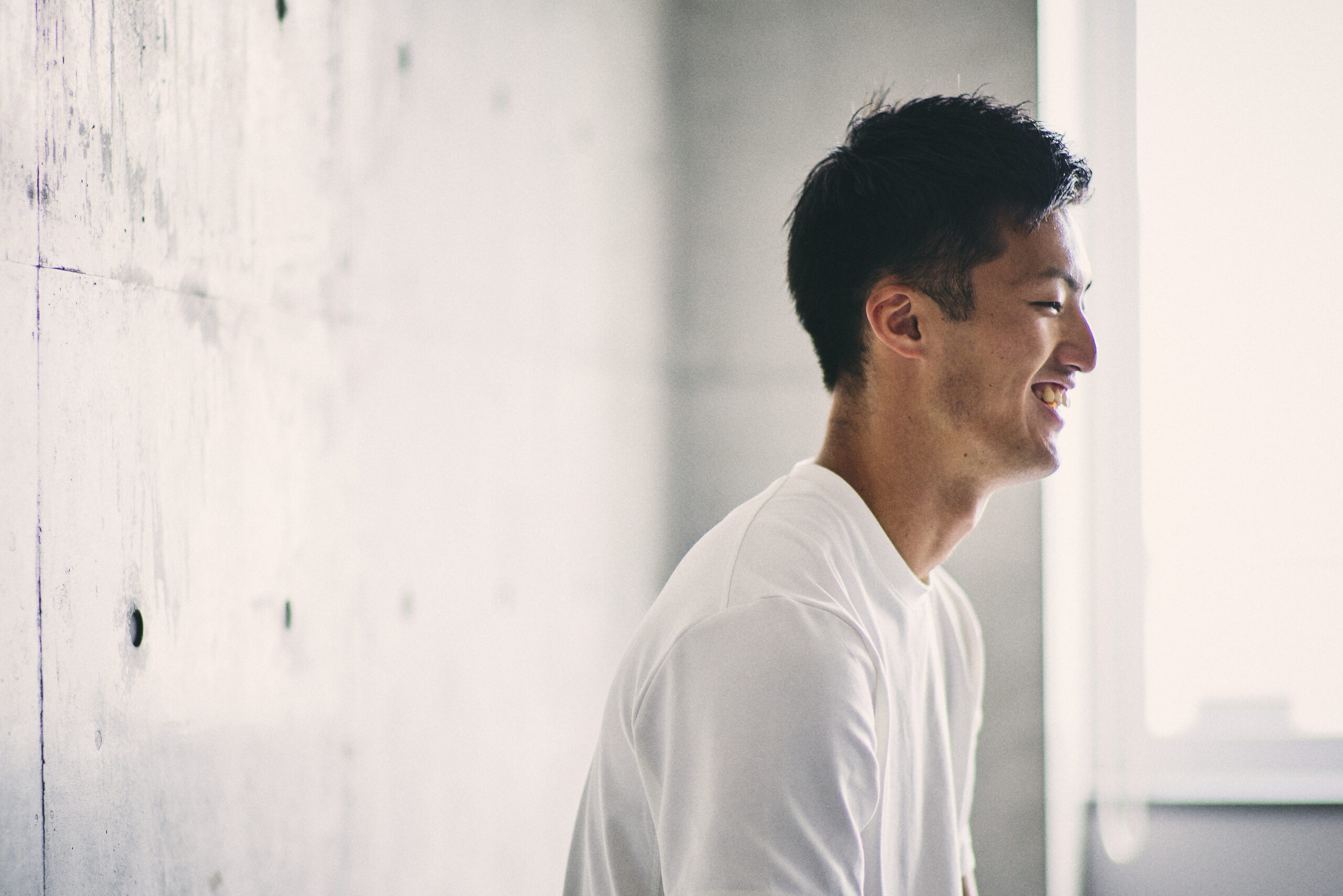
――(laughs)It seems that you have three brothers from a track and field family, but have you all been doing track and field since you were little?
Yes. I am doing the 100m, my second brother is doing the 400m hurdles, and my third brother is doing the long jump. By the way, we all went to the same elementary, junior high, high school, and university. Now my second and third brother lives in a double room in the dormitory, and until last year, I lived in the same room as my second brother.
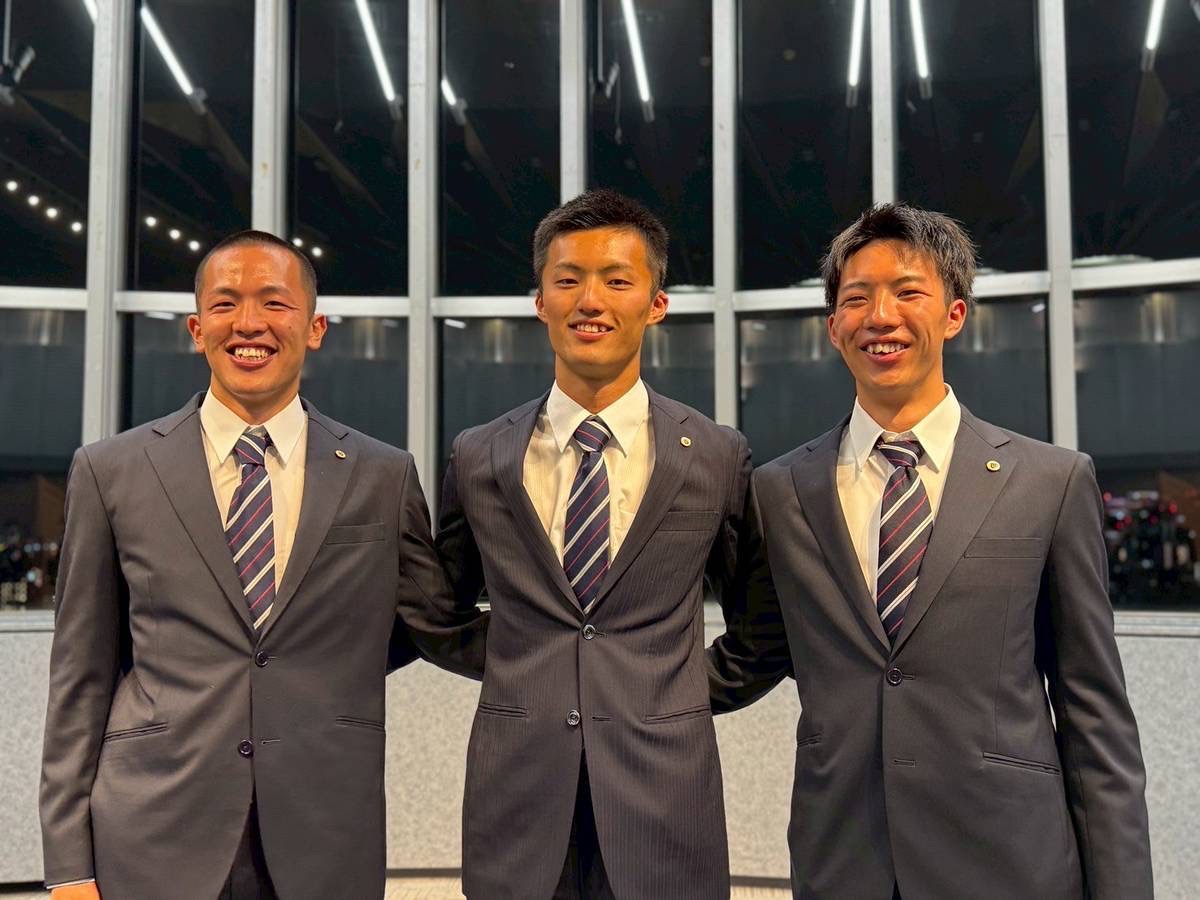
On the right is his second brother, Kiyoto, and on the left is his third brother, Akihiro
――It’s amazing that you all went to the same school together. Even in the dorm room (laughs). Do you have a goal to aim for the world with the three brothers?
I try not to say that. It might put pressure on them, but I’m also having fun doing it, so I want both of them to just have fun and keep competing. That’s why I secretly care about them (laughs). I don’t say anything during regular training, but sometimes I watch the weight training from hiding behind or casually suggest, “Why don’t you try this?” This is just sometimes, though.
It’s up to them to decide if they want to aim for the world. But I don’t want them to practice with a depressed feeling.
Not only track and field, but also my “writing skills” are my strong points
――Is there anything you’ve been into lately?
It’s insanely recent, but I’m addicted to F1! Around March, I was casually watching a F1 show on Netflix, and I was hooked from there. I also bought the PS5 F1 game that was released at the end of last month, and I’m really into it.
――It’s surprising that you are into F1. Do you like playing games?
I like it. In fact, I also won the Nintendo Switch 2. When the World Athletics Championships are over, I want to play a lot as a reward!
――What are you good at outside of track and field?
In fact, I’m good at writing. People say it’s surprising. Since I am in the Faculty of Literature, I have a lot of report assignments, but if I concentrate on writing, I can write thousands of words at once. I don’t have much trouble with assignments, so I’m glad I joined the Faculty of Literature. By the way, the theme of my graduation thesis was Star Wars (laughs).
――It makes me want to read your graduation thesis (laughs). Was it difficult to balance between your university classes?
It was hard, but I got most of my credits in the first two years as I wanted to spend as much time as possible in track and field. I think that whether or not you can do what you need to do in your daily life, including studying, will make a difference in how you face track and field. Of course, it’s hard to take everything too seriously, so of course you need to take a moderate break and tune your body.
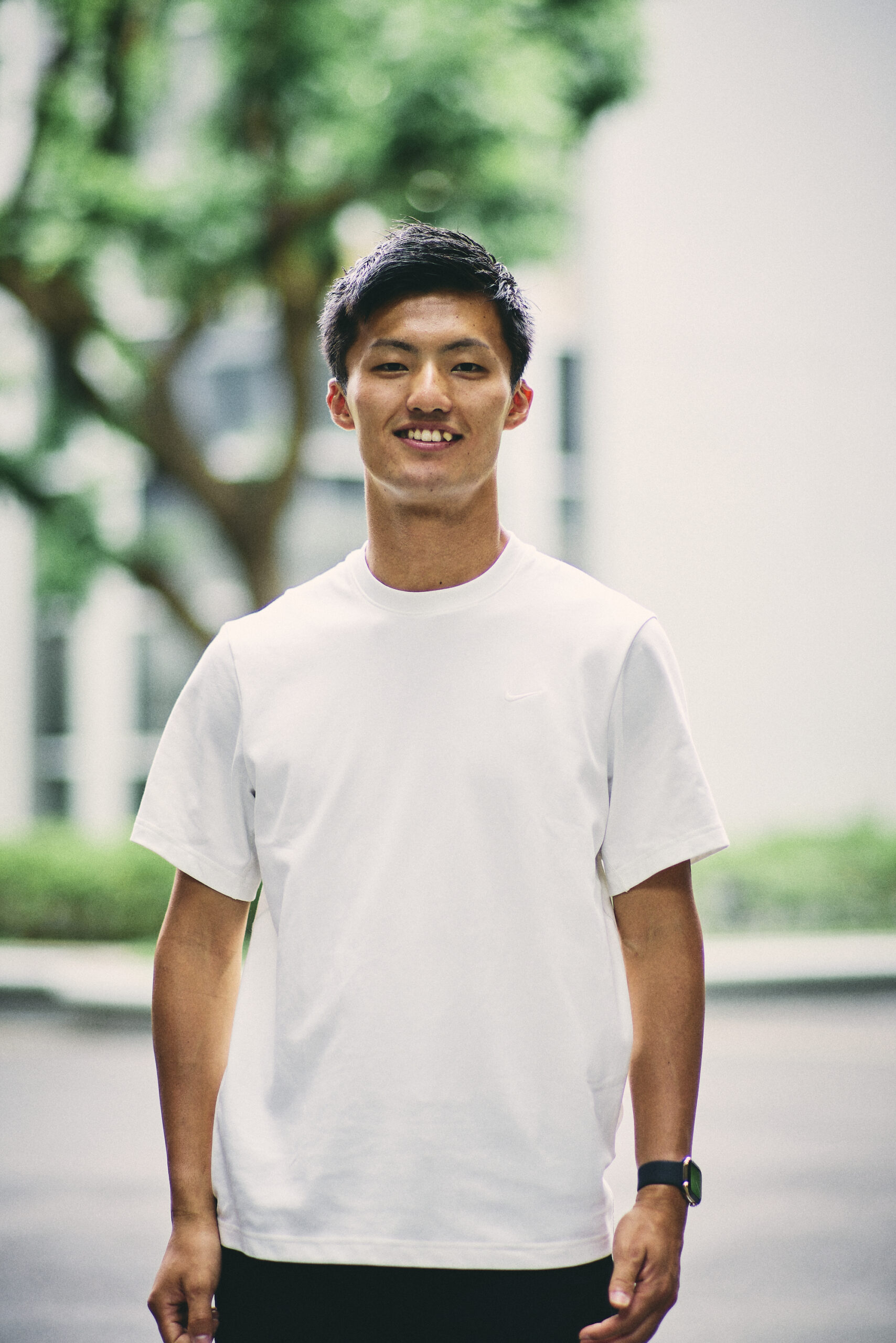
A year as captain – and then to the World Athletics Championships
――How do you analyze your personality? Or what kind of person do people say you are?
People often say that I’m “noisy” (laughs). I am aware that I’m the type of person who says what’s on my mind, right away. For example, a relay is a team sport, so you don’t usually say anything that brings down everyone’s morale. But I can’t help to say, “You’re so slow!” or “What are you doing!?” They often get angry with me for that (bitter laughs). For better or worse, I guess I have a personality that clearly says things that others find difficult to say,
――Is it because you were given the role as captain in your fourth year of university?
No, it’s my inborn temperament (laughs). When I became captain, my coach Hiroyasu Tsuchie told me, “It’s good to be able to say a lot of things clearly, but don’t say too many unnecessary words.” Also, I was also told that I was like the coriander in the Tom Yum Soup, “something that you need to have and can’t do without it” (laughs).

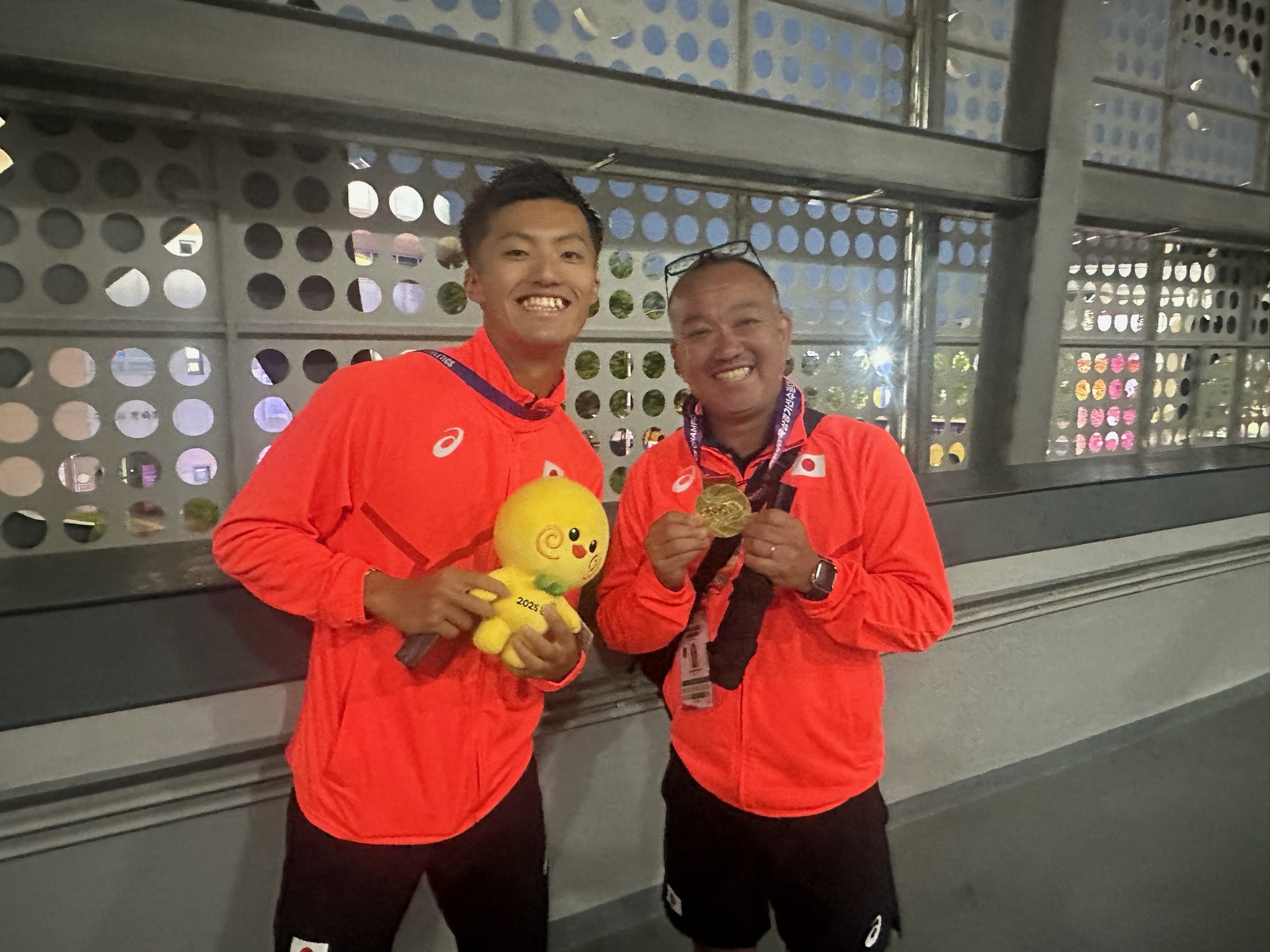
――What was it like to be the captain of the short-distance event for a year?
The only thing I’ve consistently told them is, “Let’s do it properly on the days when we have training.” Of course, when I want to have fun I will do so, but I quickly change my mindset and concentrate on my training. I don’t like to be half-hearted, so I had a solid determination for that. Other than that, I have been trying to lead the team as much as possible with the results, but I haven’t been able to do anything particularly as captain. To be honest, I feel like I ended up not knowing what to do as a captain.
But maybe I was straining myself in my own way, and when the Japan Intercollegiate ended in June, I felt like a weight had been lifted off my shoulders. In the final of the mile relay, I was deeply emotional to think that it was my last competition as captain.
――Are there any members of the short-distance event that you are particularly close with?
All of my colleagues are good friends, but if I had to pick one, it would be Daiki Ogawa in the 400m hurdles. In a sense because “I look up to him”. At last year’s Japan Championships, he finished at the last minute with a new personal record and a perfect time for the entry standard, and he was selected to represent the team for the Paris Olympics. Besides that, I’ve seen many times that he did his best in a race where he was clearly the underdog, so his competitiveness, or his ability to have a lot of guts, is something I really want to emulate. I don’t say it directly to him though (laughs).
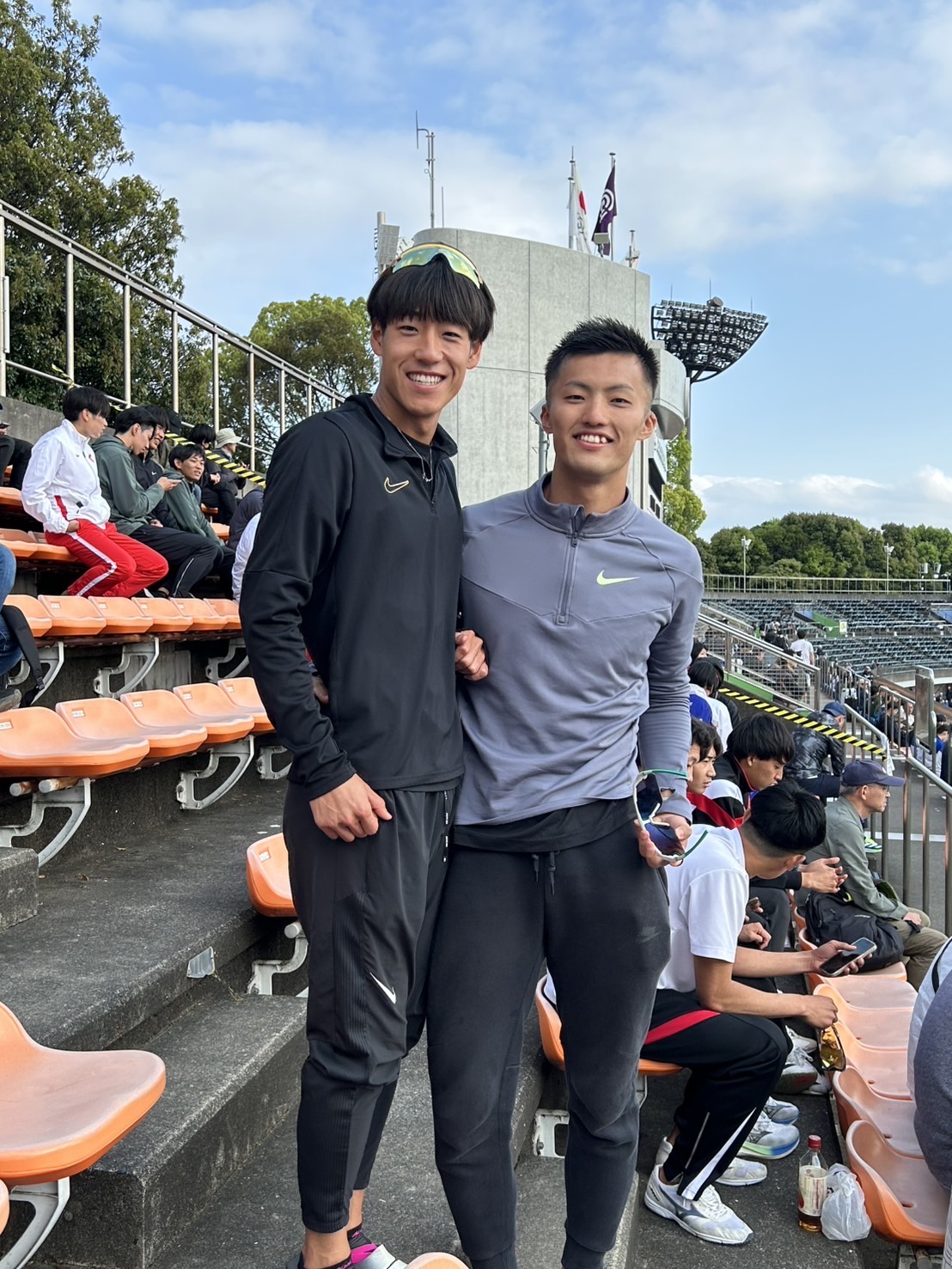
――What kind of person is Daiki Ogawa usually like?
He is a clumsy guy like a screw missing from his head, and I can’t say much about it, but he is really crazy (laughs).
When it came time to decide on the captain, Daiki Ogawa and I were the last candidates. Then, when it came time to see who would raise the hand at the end, he quickly raised his hand and said, “I will be vice-captain!” Then I have no choice but to be the captain (bitter laughs). This is just a small part of him, but that’s what he is like.
――I’d like to hear more (laughs). Thank you very much for talking with us today! Finally, do you have a message for readers who are looking forward to the World Athletics Championships?
If I can compete, I will definitely make it a race that excites the spectators. I would be happy if the World Athletics Championships would be an opportunity for more people to take an interest in track and field, whether it is to go see the Intercollegiate Championships or the Japan Championships next year. I will do my best to give a performance that will make you think, “the world of Japanese track and field is amazing!”, so please support us!
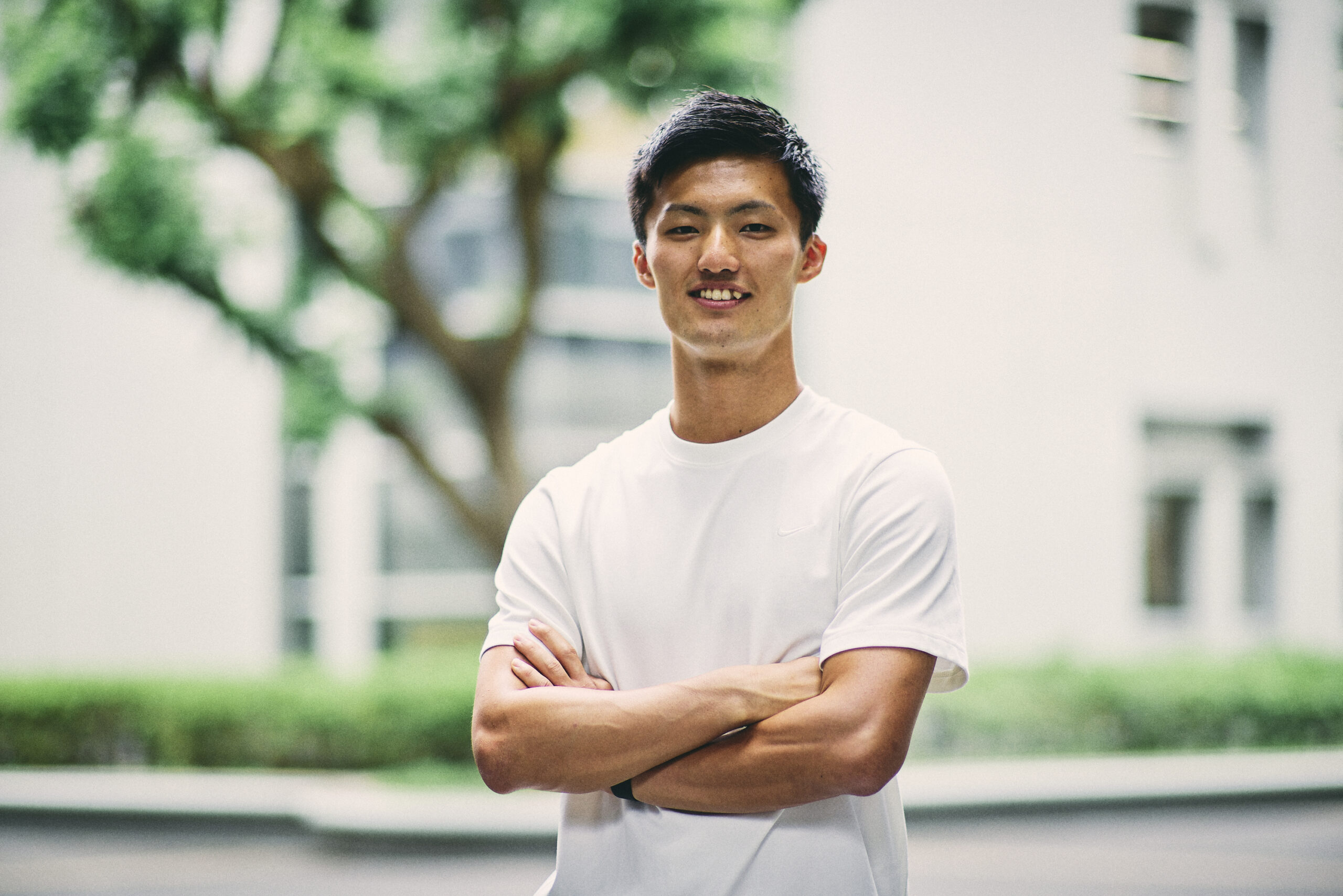
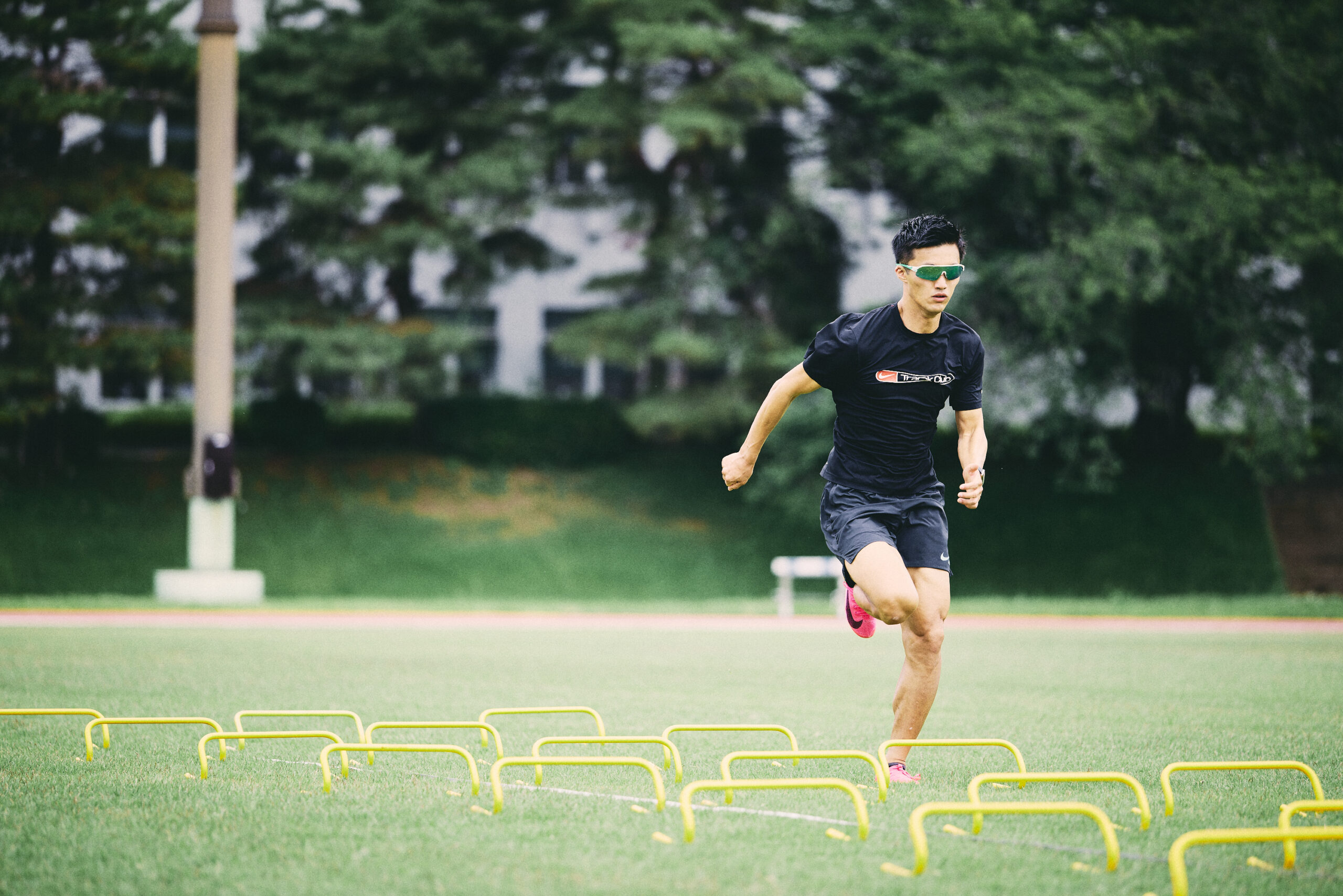

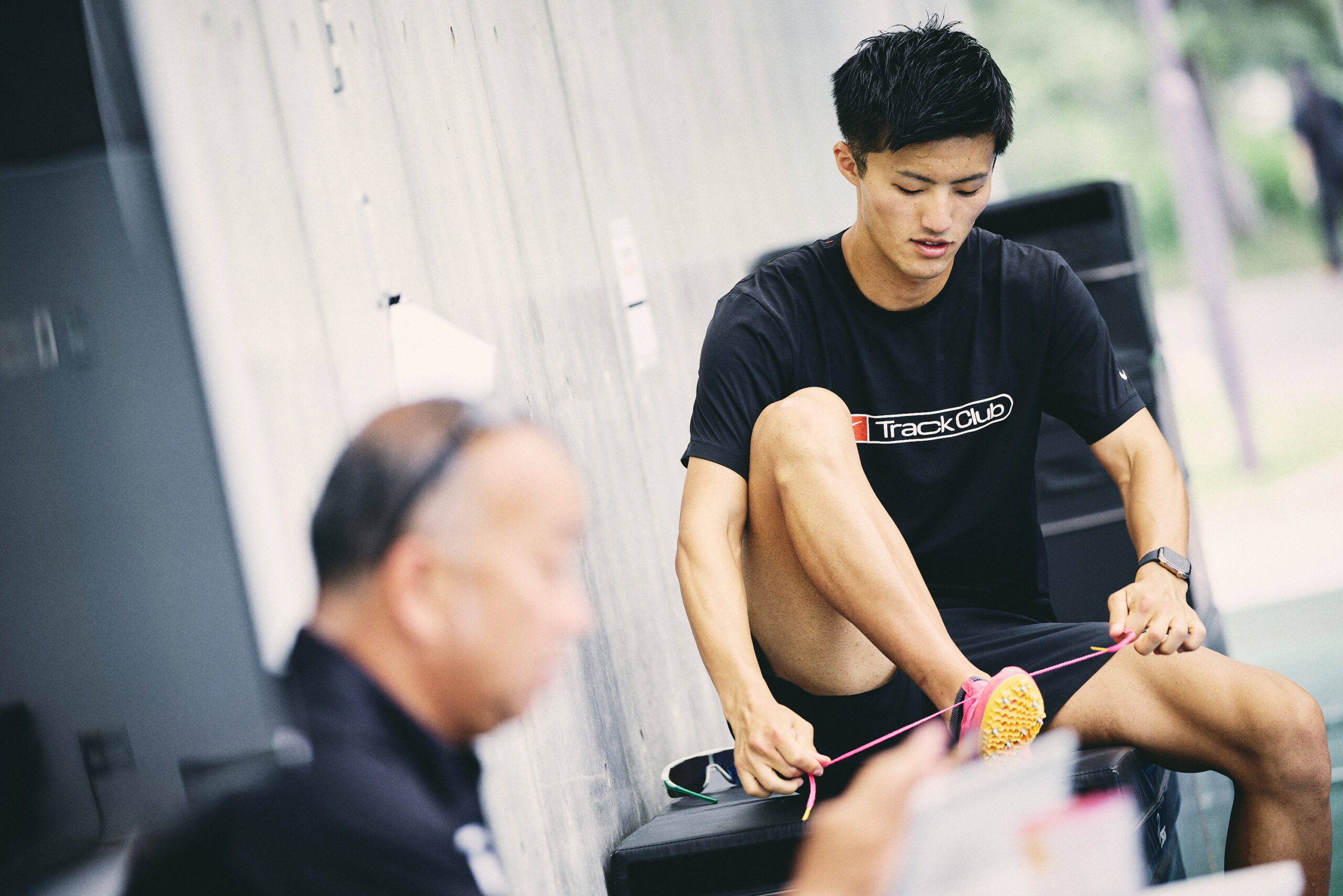
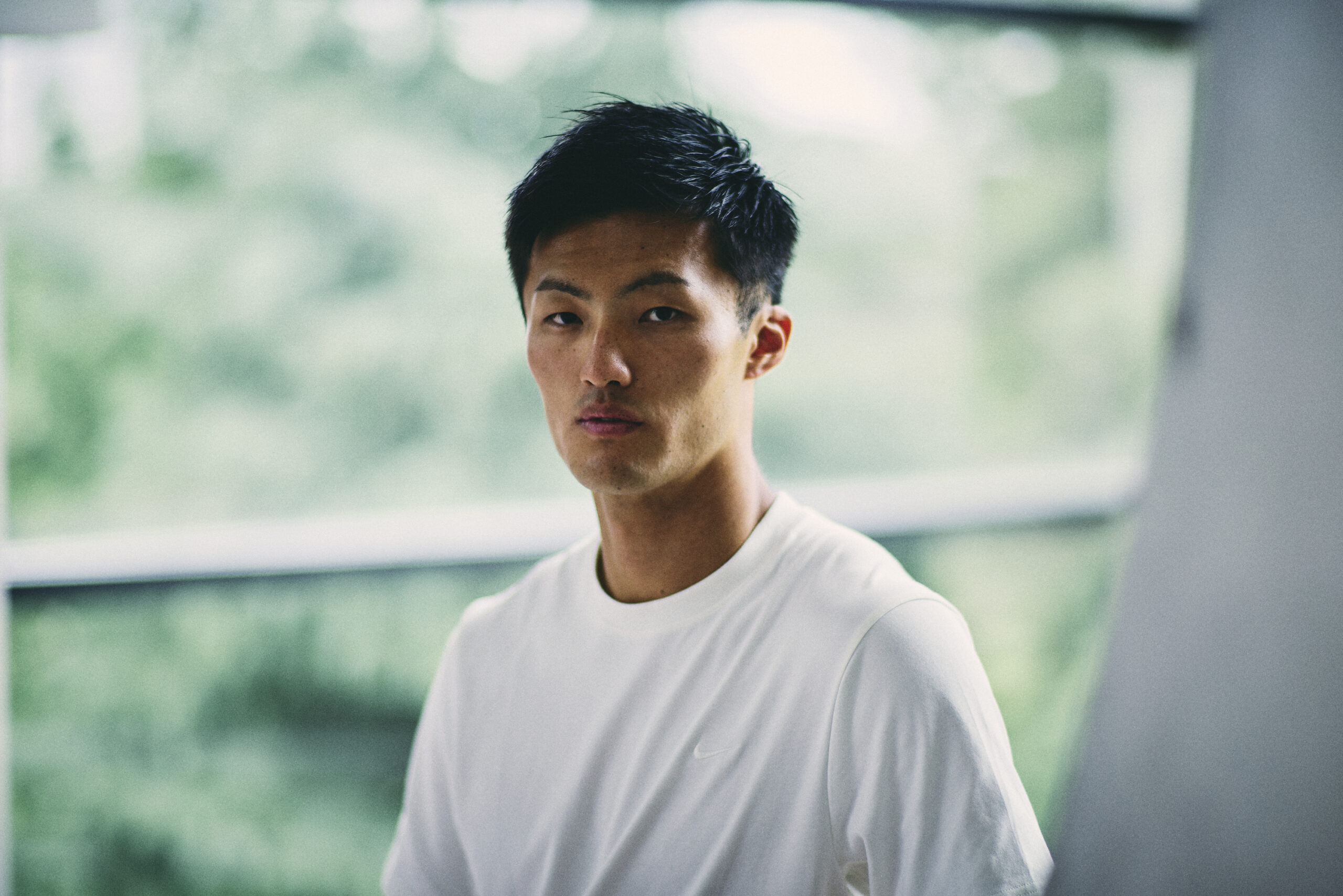
text by Hiromi Hiraki
photographs by Uta Mukuo
Co-produced with the Local Organising Committee of World Athletics Championships Tokyo 25.
